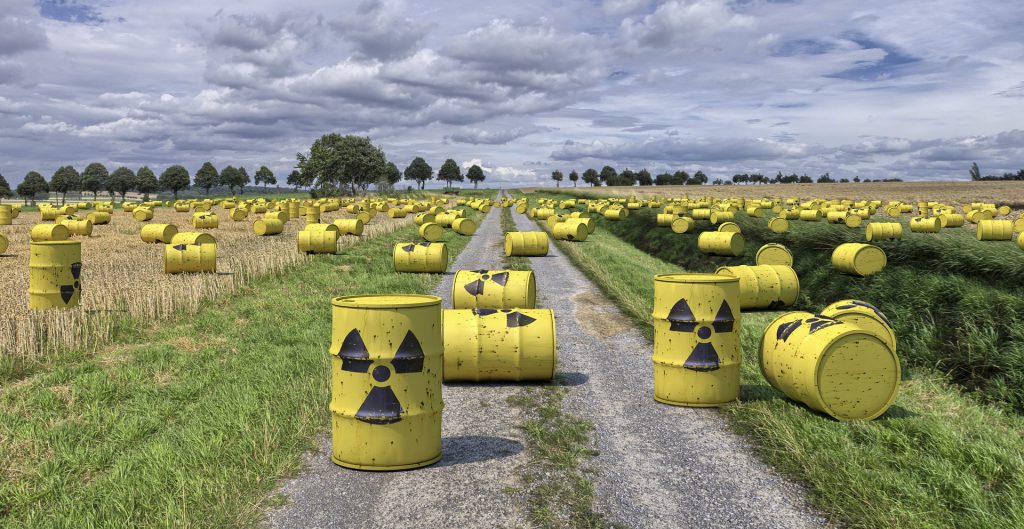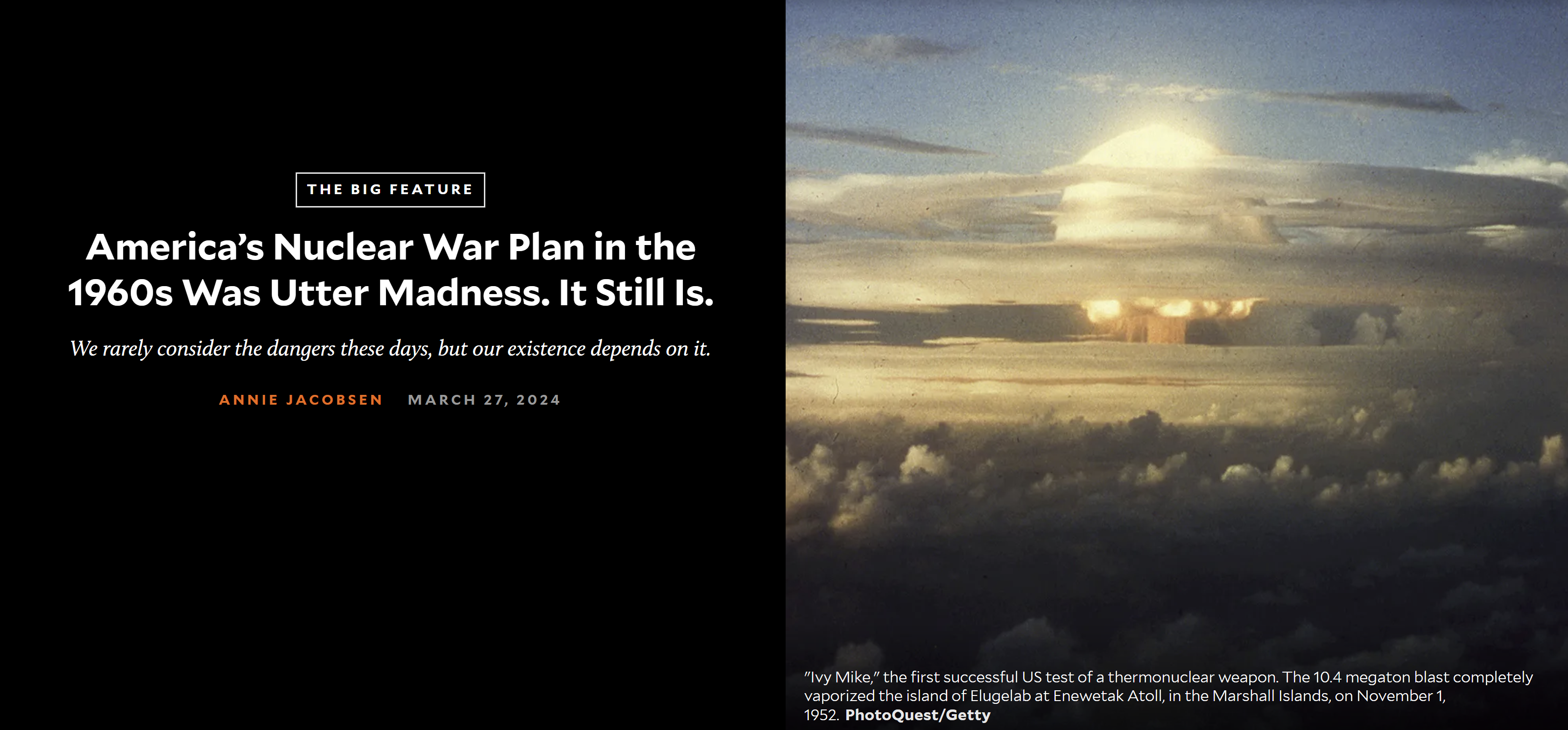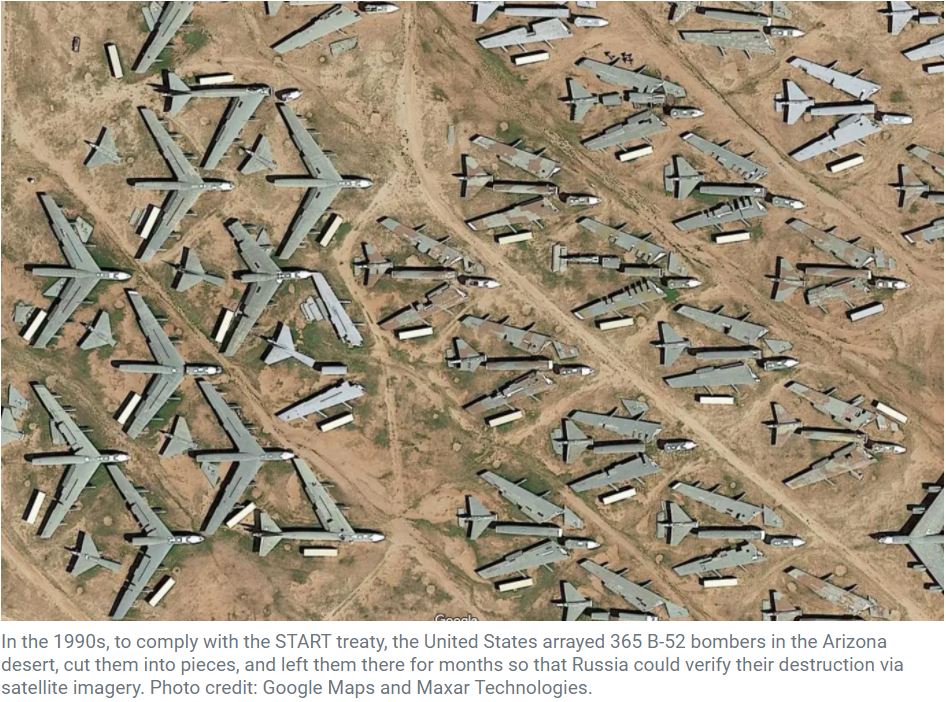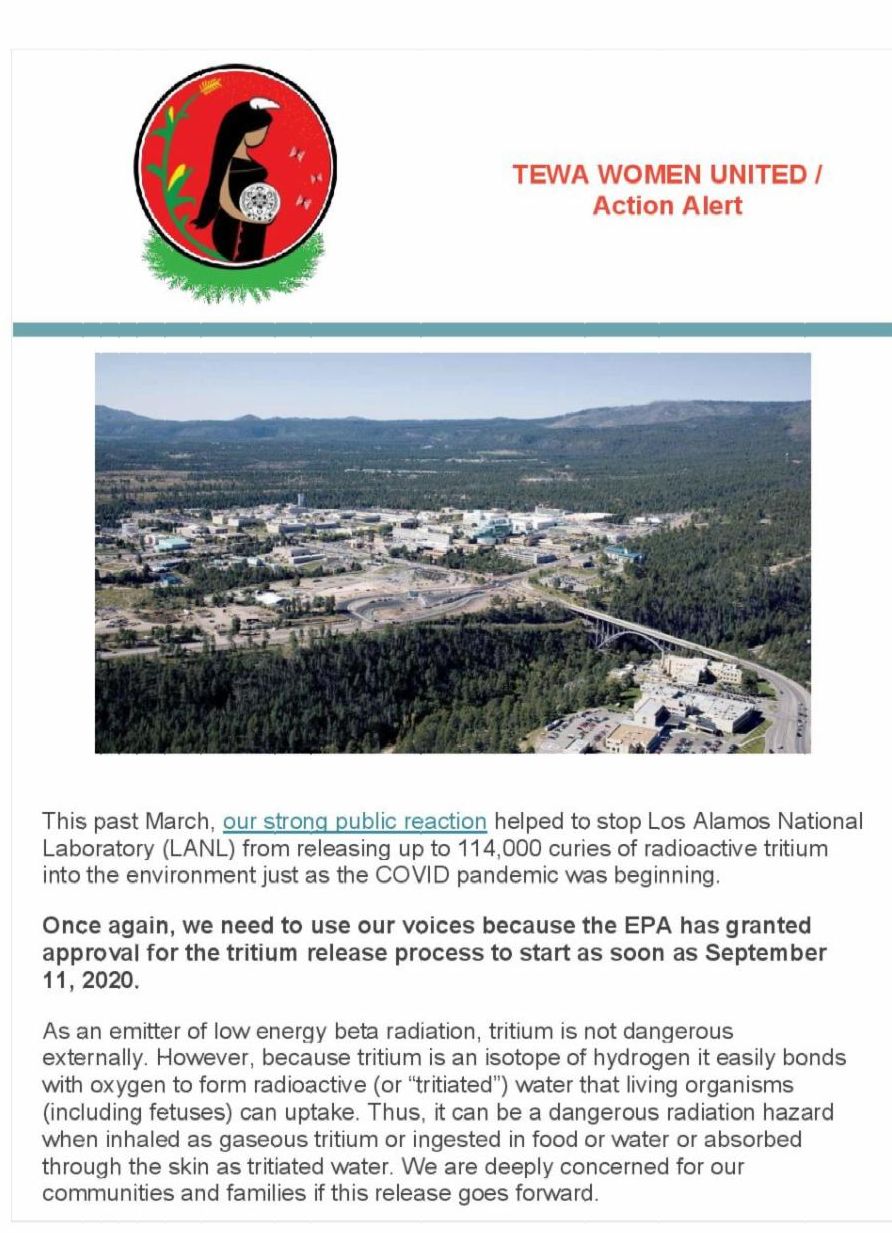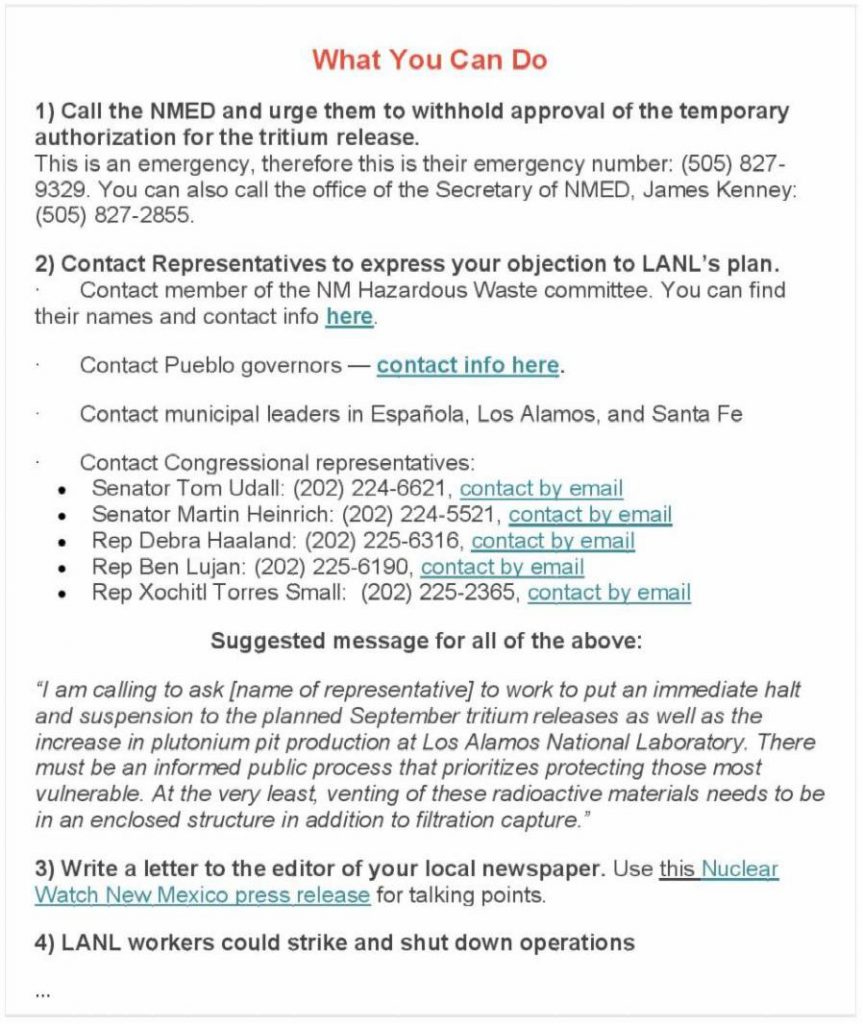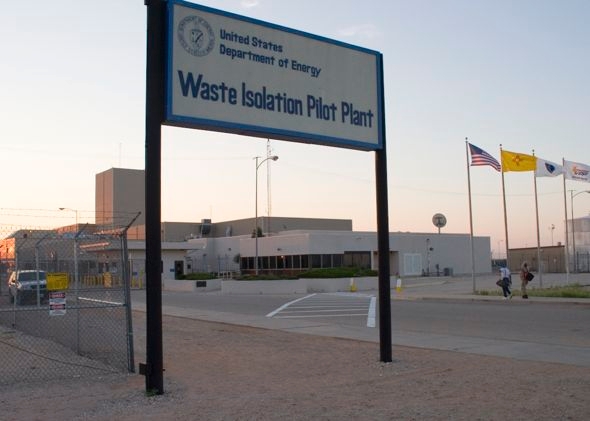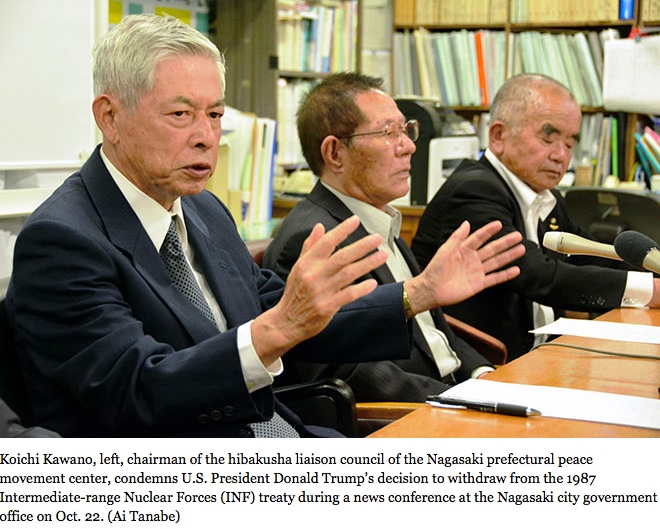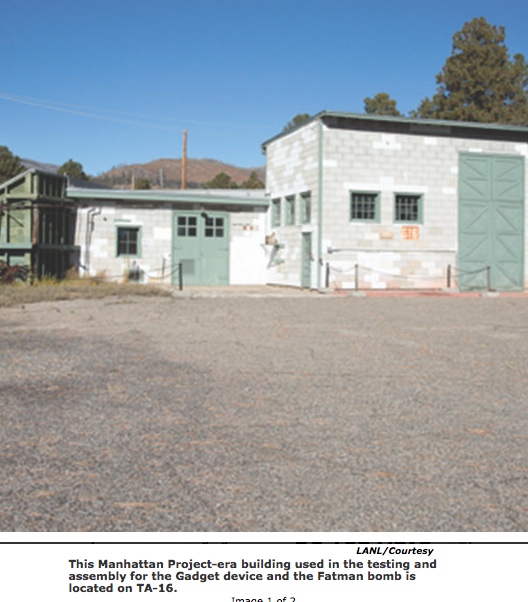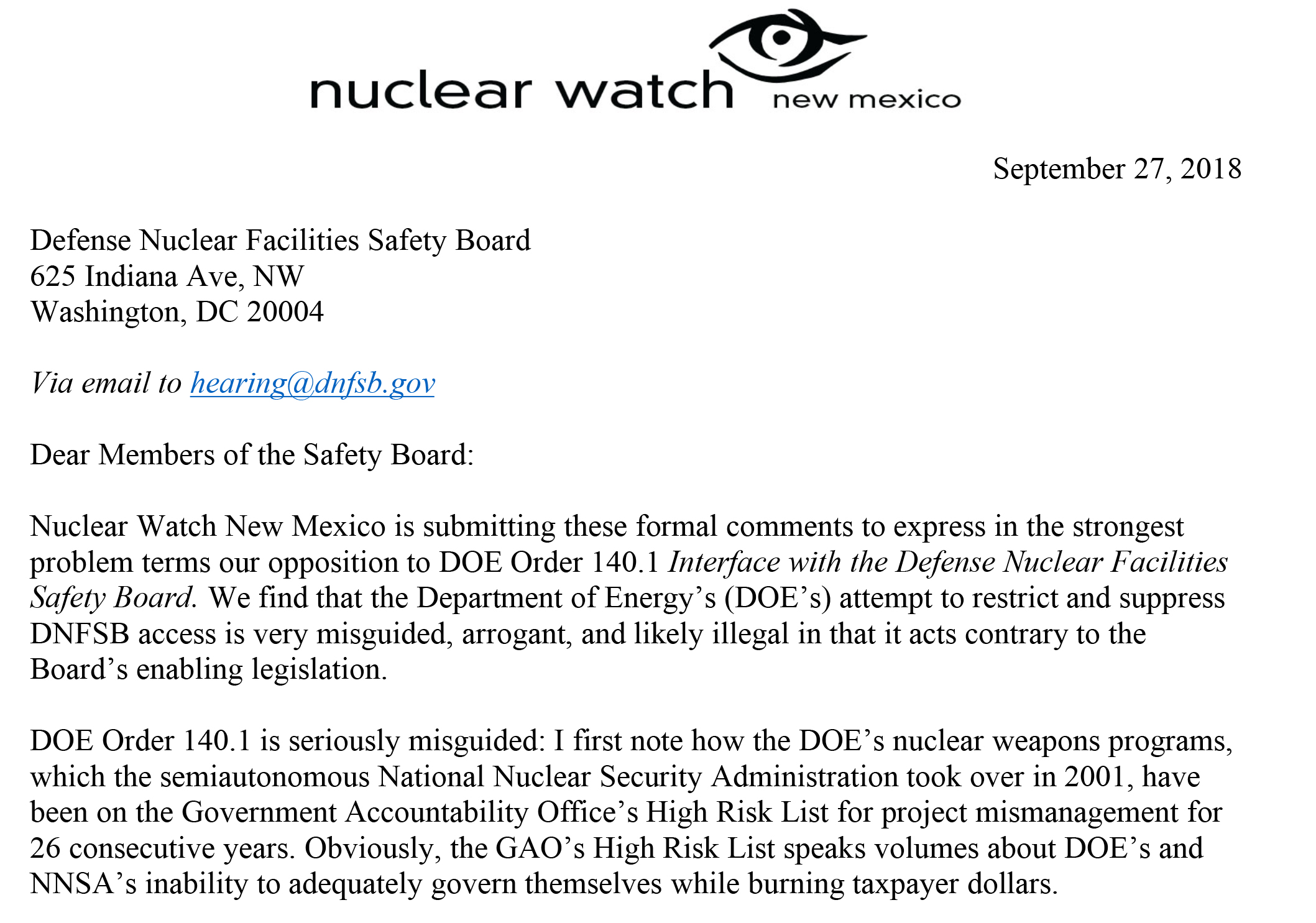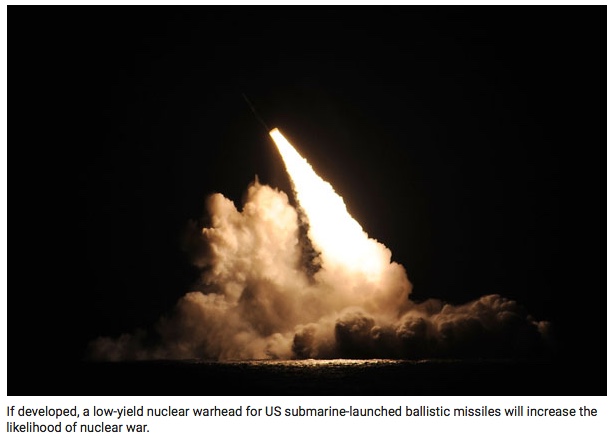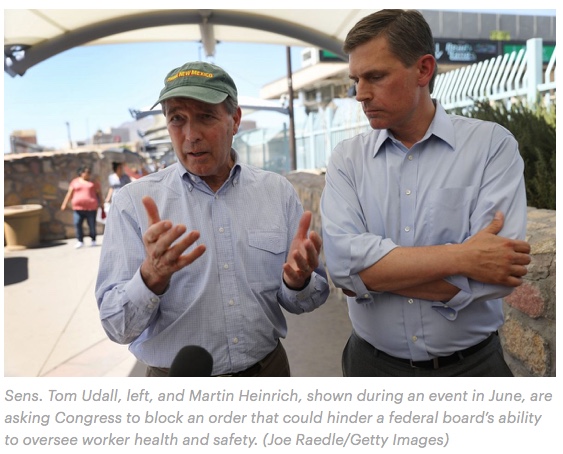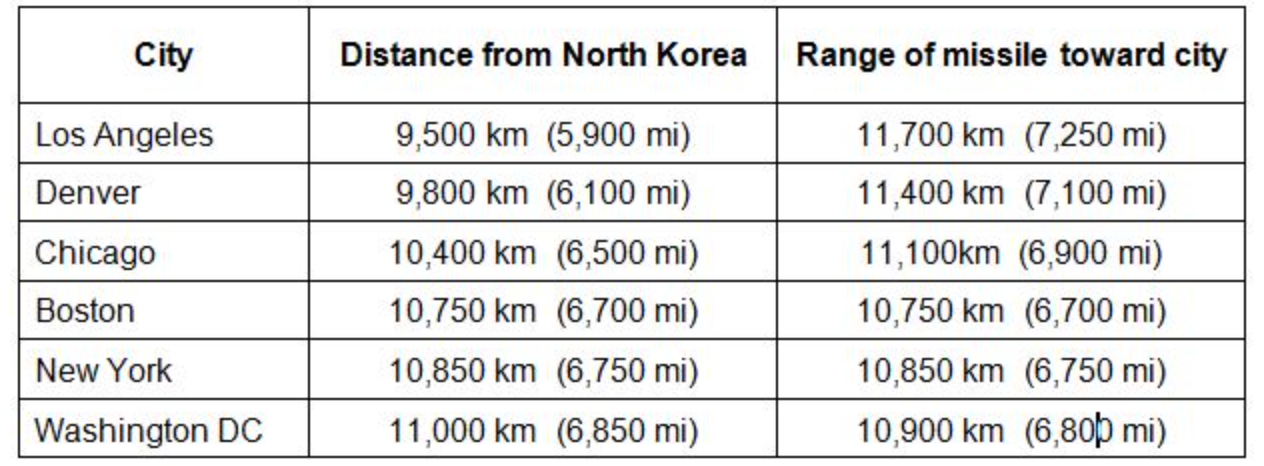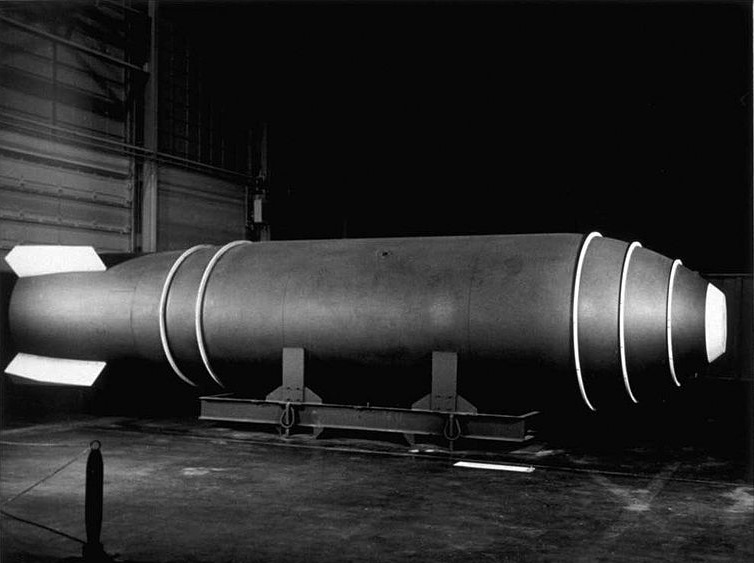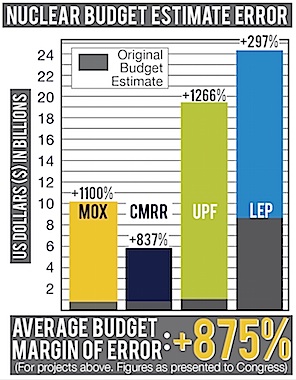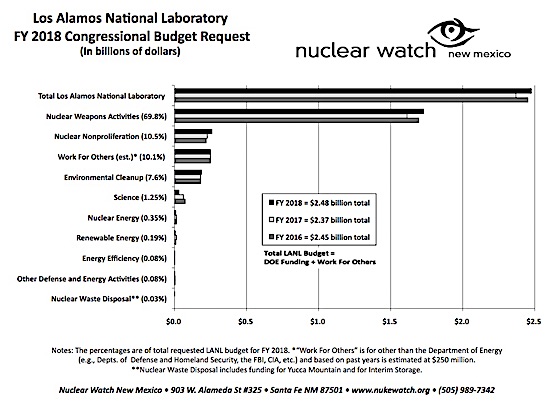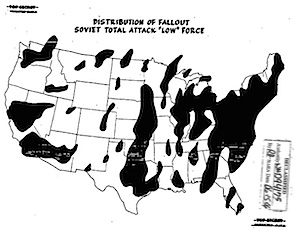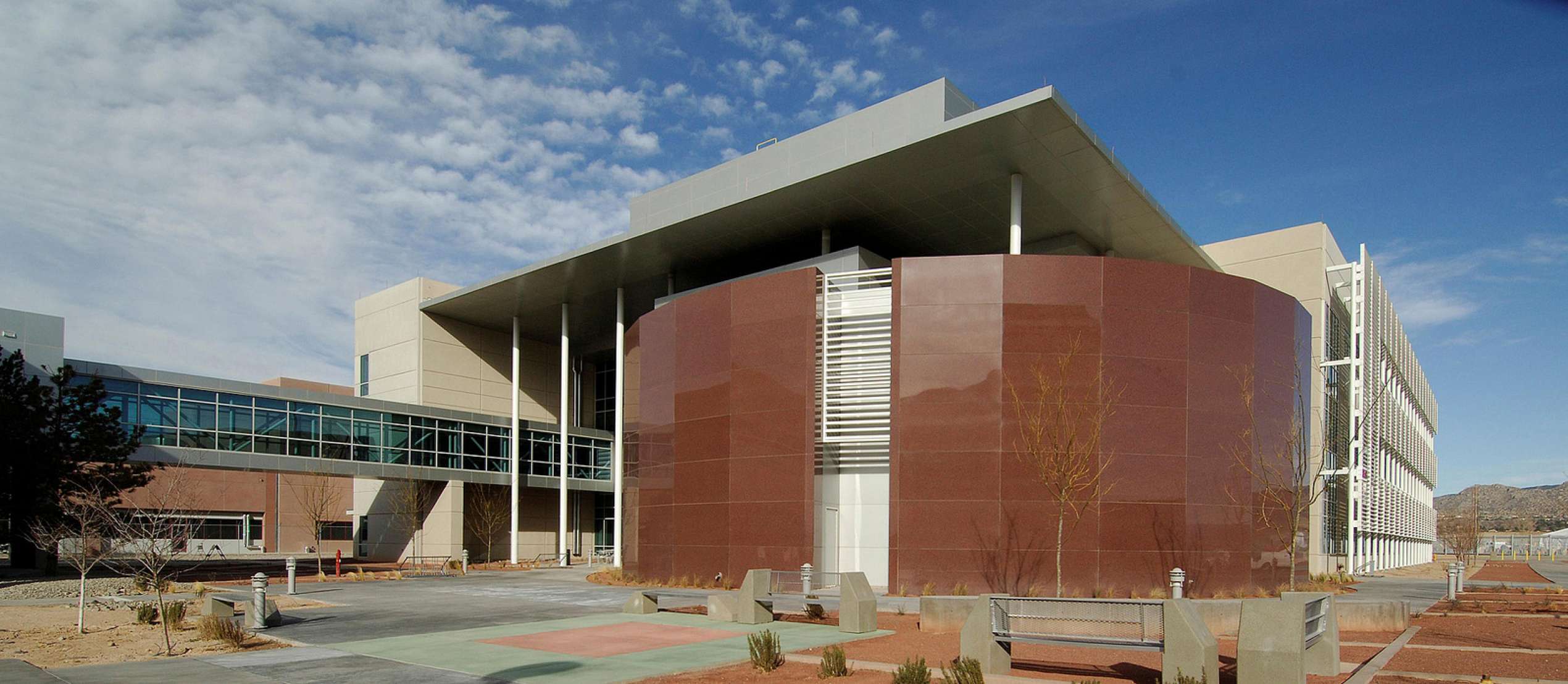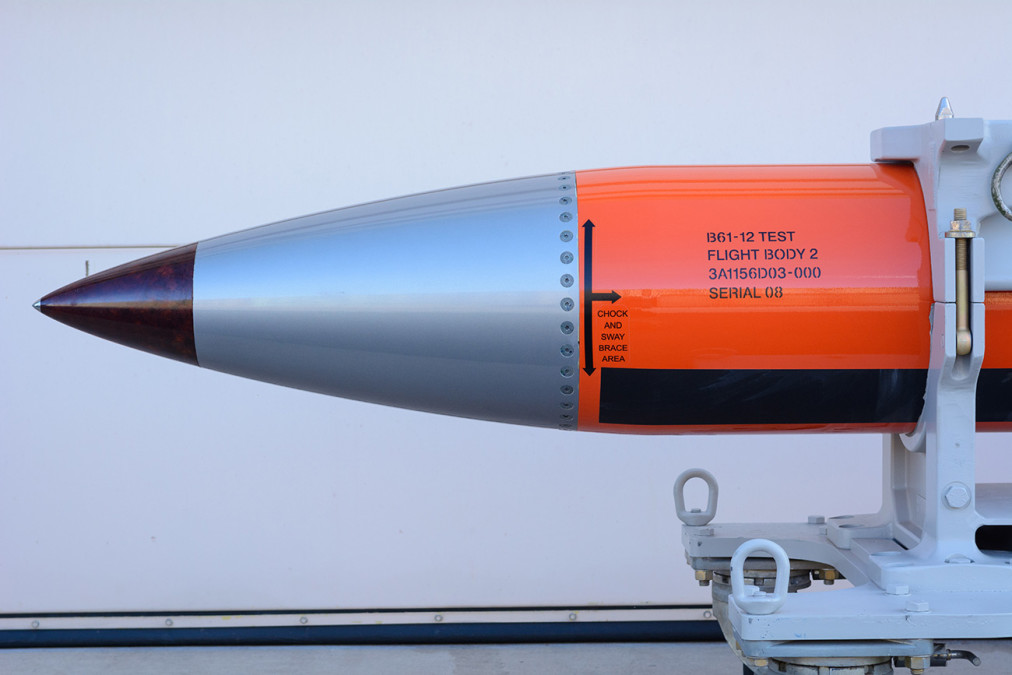2020
Oak Ridge Environmental Peace Alliance: Response to NNSA issuing Amended Record of Decision on EU operations at Y-12 Plant
GOVERNMENT ISSUES RECORD OF DECISION TO CONTINUE NUCLEAR WEAPONS PRODUCTION AT Y-12 COMPLEX IN OAK RIDGE, DOWNPLAYING RISK TO WORKERS AND PUBLIC CITIZENS SAY, “A BEGINNER’S CLASS IN DISSEMBLING”
The National Nuclear Security Administration issued an Amended Record of Decision for the Continued Operation of the Y-12 National Security Complex* on September 30, 2020. NNSA says the new decision updates its October 2019 AROD.
The AROD dismisses risks from earthquakes and declares that NNSA will continue to conduct nuclear weapons manufacturing operations in facilities that do meet environmental and safety codes for at least 20 more years under its Enriched Uranium program. This AROD is the result of a federal court decision in September 2019 in a case brought by the Oak Ridge Environmental Peace Alliance, Nuclear Watch New Mexico, the Natural Resources Defense Council and four individual plaintiffs. In that decision, Chief Judge Pamela Reeves ruled NNSA had not met the requirements of the National Environmental Policy Act. Judge Reeves vacated two Supplement Analyses and one previous AROD and ordered NNSA to conduct further analysis on the risks of earthquakes.
“The new Amended Record of Decision is a pretty respectable beginner’s class in dissembling,” said OREPA coordinator Ralph Hutchison. “The first lie is a big one, and easily disproved. NNSA says ‘The court further held that NNSA is not required to prepare a Supplemental Environmental Impact Statement for the UPF Project or the Extended Life Program.’ This is simply not true.
“The court explicitly did not make that finding; it would have been inappropriate. What the court did was tell NNSA they didn’t have to prepare a new or Supplemental EIS due to changed circumstances. Instead, they had to prepare a Supplement Analysis—one step earlier in the process—to determine whether or not a new or Supplemental EIS was required. That is the only purpose of an SA, and NNSA knows it. They just tried to spin it. Either that, or they think the court didn’t understand what it was saying.
SC Judge Freezes Federal Funds From $600 Million Plutonium Settlement
“A former Democratic state legislator, Sellers said that from his experience, he knows if the $600 million — or however much money there is — goes into the general fund, the money will not be spent on the counties impacted by the storage of plutonium.”
BY: JOHN MONK | thestate.com
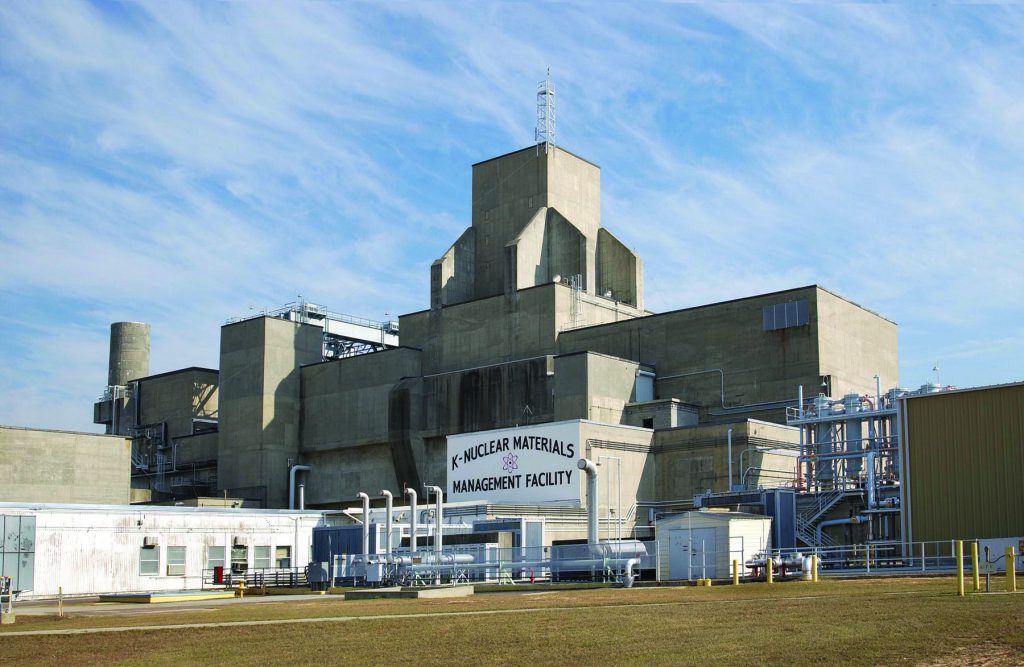
Credit SAVANNAH RIVER SITE / SRS.GOV
BARNWELL, SC – A state circuit judge on Wednesday issued a temporary injunction freezing $600 million in federal funds that came to South Carolina as a result of a political settlement in a long-running dispute over what to do with some 11 tons of deadly plutonium now stored at the Savannah River Site in Barnwell County.
Judge Clifton Newman issued the injunction against State Attorney General Alan Wilson shortly before noon Wednesday in response to a motion by State Sen. Brad Hutto, D-Orangeburg, who represents Barnwell County, Allendale County and five other counties in the area.
Newman’s injunction, issued from the bench in a Barnwell County courtroom, is temporary and within a month he is expected to hold another hearing that will fully air differing sides on what to do with the $600 million.
“All federal funds received by the state must be appropriated by the state in accordance with the federal purpose for which it was intended,” Hutto told the judge. Since the funds in the settlement were given by the federal government as compensation for the plutonium stored in their geographic area, they should generally be spent there in those impacted counties along the state’s southwestern boundary, Hutto argued.
It is essential that the “identity” of the federal funds be preserved before Wilson routes the money into the state’s general fund, where other lawmakers might seek to spend it for purposes outside those South Carolina counties Hutto represents, Hutto told the judge.
Compact Nuclear Fusion Reactor Is ‘Very Likely to Work,’ Studies Suggest
“…the hurdles to building a machine that can create and control a fusion plasma — a roiling ultrahot cloud of atoms that will damage or destroy anything it touches — are enormous.”
BY: HENRY FOUNTAIN | nytimes.com
Scientists developing a compact version of a nuclear fusion reactor have shown in a series of research papers that it should work, renewing hopes that the long-elusive goal of mimicking the way the sun produces energy might be achieved and eventually contribute to the fight against climate change.
Construction of a reactor, called Sparc, which is being developed by researchers at the Massachusetts Institute of Technology and a spinoff company, Commonwealth Fusion Systems, is expected to begin next spring and take three or four years, the researchers and company officials said.
Although many significant challenges remain, the company said construction would be followed by testing and, if successful, building of a power plant that could use fusion energy to generate electricity, beginning in the next decade.
DOE Activities Raise Safety Concerns about Plutonium at Three Facilities
“The DOE proposal to dispose of the useless MOX fuel pellets is unprecedented, but has been subjected to only a brief mention in an environmental analysis on pit production. Tom Clements, director of SRS Watch, says, “The analysis conducted on the disposal of the plutonium fuel is totally inadequate and a full Environmental Impact Statement (EIS) must be conducted before any repackaging and shipment to WIPP. ”
September 30, 2020 | nuclearactive.org
According to the Department of Energy (DOE), plans are under way to remove unused plutonium fuel from the Los Alamos National Laboratory (LANL). The uranium-plutonium fuel, containing around 26.4 kilograms (58.2 pounds) of weapon-grade plutonium, is called “mixed-oxide,” or MOX. In a late-August document, DOE stated that the MOX fuel, produced in France for a program at the Savannah River Site (SRS), would be disposed of as transuranic waste and therefore go to the Waste Isolation Pilot Plant (WIPP).
At present the MOX fuel, in the form of pellets, is stored at LANL’s PF-4 plutonium facility. DOE needs to empty PF-4 to have space for its planned annual production of up to eighty plutonium “pits”, or triggers, for nuclear weapons.
Four powerful players want a nuclear waste solution. What’s stopping them?
“The nuclear industry’s position in support of spent fuel legislation is tempered by a combination of reality and priorities. While the industry regularly testifies in favor of finding a long-term solution to the spent fuel problem, the reality is that state legislative prohibitions on the construction of new nuclear reactors are meaningless, given that no new reactors are planned in the foreseeable future. It is uneconomic and/or not politically viable to build a new reactor in the United States—even one of the small modular reactors under development.”
BY: JDAVID KLAUS | thebulletin.org
The 92-page platform adopted at the Democratic National Convention does not include a single sentence on the issue of how to manage the more than 80,000 tons of spent nuclear fuel sitting at 70 sites in communities across the country. The Republicans adjourned without adopting any new platform for 2020, leaving their 2016 platform in place—but it also did not address the nuclear waste issue.
Ironically, political interest in addressing the spent fuel issue is decreasing at a time when the number of closed nuclear plants in the United States is increasing—and it is common practice to level the plant and leave the spent fuel behind. If the issue had been as significant a political priority today as it was in the past, it would have been included in one or both of the platforms.
In its 2004 and 2008 platforms, the Democratic Party committed to “protect Nevada and its communities from the high-level nuclear waste dump at Yucca Mountain, which has not been proven to be safe by sound science.” Republicans, in their 2012 platform, focused on how “[t]he federal government’s failure to address the storage and disposal of spent nuclear fuel has left huge bills for States and taxpayers.”
Trump Administration Orders Assessment on Bolstering Nuclear Warheads as Talks With Russia Stall
“U.S. diplomats are trying to play hardball with Russia in negotiations over whether to extend New START.
“It’s very stupid,” added a former GOP arms control official who declined to be identified because he still advises the government. “It makes absolutely no sense to threaten to upload. It becomes a valid leveraging point only if the other side can’t do it. The Russians can do it, too.” ”
BY: DANIEL LIPPMAN, BRYAN BENDER & LARA SELIGMAN | politico.com
The Trump administration has asked the military to assess how quickly it could pull nuclear weapons out of storage and load them onto bombers and submarines if an arms control treaty with Russia is allowed to expire in February, according to three people familiar with the discussions.
The request to U.S. Strategic Command in Nebraska is part of a strategy to pressure Moscow into renegotiating the New Strategic Arms Reduction Treaty before the U.S. presidential election, the people said.
In making the request, the Trump administration wants to underscore that it is serious about letting the treaty lapse if Russia fails to meet U.S. demands. The negotiating team is leery that Russia is dragging out the talks in the hope that Joe Biden — who has pledged to extend New START under what Moscow believes will be more favorable terms than what this White House is offering — wins the election.
“It’s a clear signal that the costs for not negotiating before the election are going to go up,” said one of the people, who requested anonymity to relay sensitive discussions. The Trump administration is “trying to create an incentive, and it’s a real incentive, for the Russians to sit down and actually negotiate.”
The request for the assessment came in the last two weeks from a group of officials at the National Security Council and State, Defense and Energy departments that’s supporting Ambassador Marshall Billingslea in negotiations with Moscow to try to replace New START before it runs out in February.
Continue reading
U.S. Department of Energy Confirms 11.5 Metric Tons of Plutonium Stored at Savannah River Site; SRS Watch Supports DOE Assertion that Plutonium Storage “Not Posing any Additional Risk to Communities Surrounding the SRS”
https://srswatch.org/wp-content/uploads/2020/09/SRSW-news-on-SRS-plutonium-inventory-Sep-29-2020.pdf
Kaysville Withdraws From Nuclear Power Project
“We just don’t want to take on the risk of being in the project at this point.” – Councilman Andre Lortz
By: NATHAN BROWN | postregister.com
One more Utah city has withdrawn from a project to build 12 small nuclear reactors west of Idaho Falls.
The Kaysville City Council voted unanimously a week-and-a-half ago to withdraw from the Carbon Free Power Project, although the resolution left the door open for the city to hold a special meeting to rejoin the project if anything changes.
“Kaysville City is still interested in being involved with the UAMPS project,” Mayor Katie Witt said in an email. “However, we did withdraw on Sept. 17 for the time being. We would like to participate if our concerns are mitigated.”
Councilman Andre Lortz said he believes in the project, calling it “an innovative project that’s going to be very important in the future” that could fill gaps wind and solar power can’t.
“We’d love to be in this project,” he said. “We just don’t want to take on the risk of being in the project at this point.”
Lehi and Logan have also withdrawn from the Carbon Free Power Project over the past month-and-a-half, citing potential risks to local taxpayers if costs go up. There are still more than 30 cities and power systems, including Idaho Falls, that are part of it, and the members have until Oct. 31 to recommit to the project’s next phase by approving the new budget. Utah Associated Municipal Power Systems is waiting for the U.S. Department of Energy to give final approval to a promised $1.4 billion to support the project.
Portland-based NuScale Power is designing the small modular reactors, which will produce 720 megawatts and which UAMPS plans to build at the DOE desert site west of Idaho Falls. The plant is expected to be operational in 2029.
WORLD NUCLEAR INDUSTRY LOSES GROUND TO CHEAP RENEWABLES AS CANADA CONSIDERS SMALL MODULAR REACTORS
“The world nuclear industry “continues to be in stasis,” with power plants shutting down at a faster rate in western Europe and the United States, the number of operating reactor units at a 30-year low, and the few new construction projects running into “catastrophic cost overruns and schedule slippages,” according to the latest edition of the annual World Nuclear Industry Status Report (WNISR), released last week.”
By: MITCHELL BEER / theenergymix.com
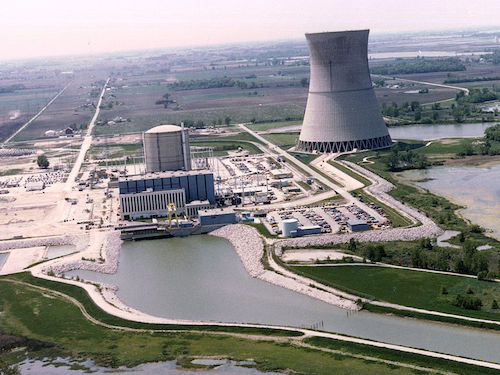
“Some 408 nuclear reactors were in operation in 31 countries as of July 2020, a decline of nine units from mid-2019 and 30 fewer than the 2002 peak of 438,” Reuters writes, citing the report. “The slow pace of new projects coming onstream also increased the overall age of the global fleet to around 31 years.”
“Overall, in terms of the cost of power, new nuclear is clearly losing to wind and photovoltaics,” with the two renewable technologies now receiving about 10 times the investment, write Jungmin Kang, former chair of South Korea’s Nuclear Safety and Security Commission, South Korea, and Princeton University Professor Emeritus Frank von Hippel, in their foreword to the 361-page report. That meant new nuclear projects “were struggling to secure finance amid competition from renewables, with reported investment decisions for the construction of new nuclear plants at around US$31 billion in 2019,” Reuters says.
Biden would push for less US reliance on nukes for defense
“If future budgets reverse the choices we’ve made, and pour additional money into a nuclear buildup, it hearkens back to the Cold War and will do nothing to increase the day-to-day security of the United States or our allies,” Biden said in a Jan. 11, 2017, speech at the Carnegie Endowment for International Peace.
By: ROBERT BURNS | apnews.com
The State of New Mexico Objects to Nuclear Fuel Storage Plan
“New Mexico is strongly objecting to federal nuclear regulators’ preliminary recommendation that a license be granted to build a multibillion-dollar storage facility for spent nuclear fuel from commercial power plants around the U.S.”
BY: SUSAN MONTOYA BRYAN / ASSOCIATED PRESS abqjournal.com
State officials, in a letter submitted Tuesday to the Nuclear Regulatory Commission, said that the site is geologically unsuitable and that technical analysis has been inadequate. They also say regulators have failed to consider environmental justice concerns and have therefore fallen short of requirements spelled out by federal environmental laws.
The letter also reiterates the state’s concerns that the storage facility would become a permanent dumping ground for the spent fuel, as the federal government has no permanent plan for dealing with the waste that has been piling up at nuclear power plants.
The officials pointed to a legacy of contamination in New Mexico that includes uranium mining and milling and decades of nuclear research and bomb-making at national laboratories, saying minority and low-income populations already have suffered disproportionate health and environmental effects as a result.
Given the concerns, state officials wrote that a draft environmental review of the project “fails to demonstrate that residents of New Mexico, including vulnerable populations, will be adequately protected from exposure to the radioactive and toxic contaminants that could be released to air and water by the proposed action.”
A group of Democratic state lawmakers also raised concerns.
Elected leaders in southeastern New Mexico support the project, saying it would bring jobs and revenue to the region and provide a temporary option for dealing with the spent fuel.
The World Nuclear Industry Status Report, 2020
The WNISR2020 assesses on 361 pages the status and trends of the international nuclear industry and analyzes the additional challenges nuclear power is facing in the age of COVID-19. A focus chapter analyzes nuclear programs in the Middle East as the first reactor started up in the Arab world.
Seven interdisciplinary experts from Canada, France, Germany, Japan, Lebanon/U.S. and the U.K., from top think tanks like Chatham House in London and prestigious universities like Harvard in Cambridge, Meiji in Tokyo and Technical University in Berlin, have contributed to the report, along with a data engineer, numerous proofreaders and two artistic designers. The foreword was provided by Frank von Hippel, Professor Emeritus of Princeton University, and Jungmin Kang, former head of the safety authority in South Korea.
In 2019, for the first time in history, non-hydro renewables like solar, wind and biomass generated more electricity than nuclear power plants.
The number of operating reactors in the world has dropped by nine over the past year to 408 as of mid-2020, that is below the level already reached in 1988, and 30 units away from the historic peak 438 in 2002.
You can download the PDF version of the 2020 Report:
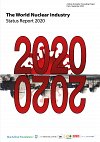



For your convenience, all the tables and graphs from this report are also downloadable in PDF format. The individual files are listed in the following pages:
The WNISR2020 Assesses Challenges Nuclear Power is Facing in the Age of COVID‑19
“New renewable resources like wind and solar power increased by 184 gigawatts last year, while nuclear power grew by only 2.4 gigawatts. As a result — for the first time in history — renewable sources (excluding hydropower) generated more power than nuclear plants in 2019.”
“Nuclear energy has become irrelevant in the electricity generating technology market,” said Mycle Schneider, the coordinator of the report. “At the same time, COVID-19 puts additional stress on the sector.”
September 24, 2020 | worldnuclearreport.com
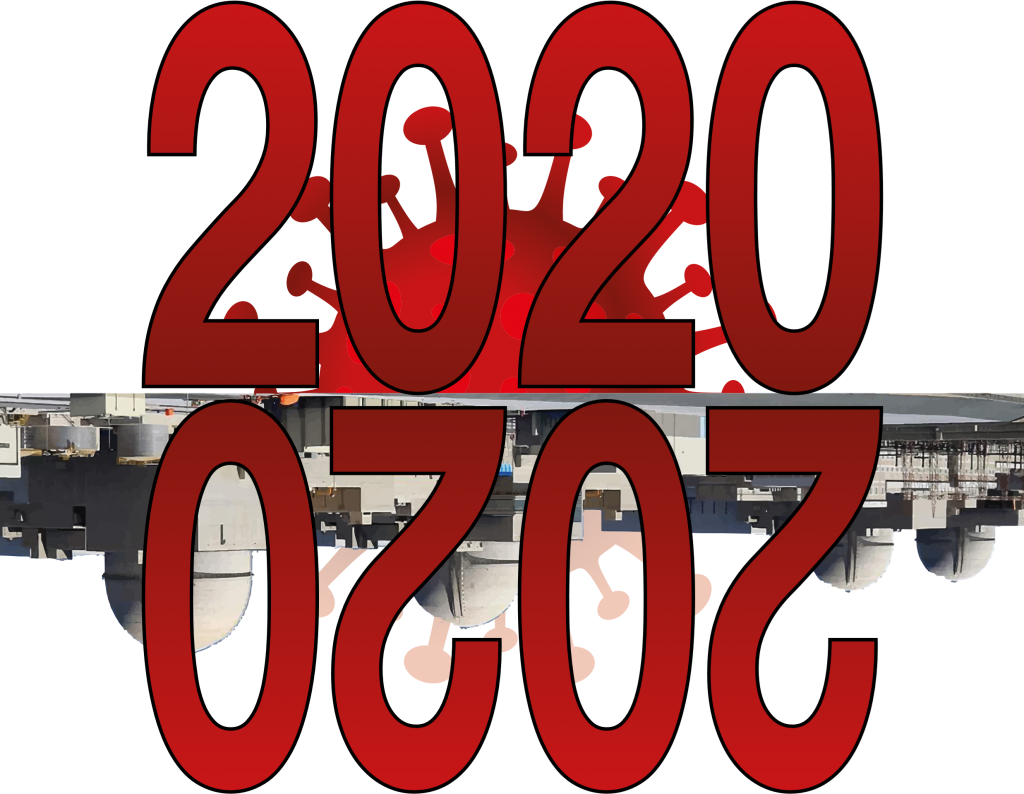 The World Nuclear Industry Status Report (WNISR2020), released on 24 September 2020, assesses in 361 pages the status and trends of the international nuclear industry and analyzes the additional challenges nuclear power is facing in the age of COVID-19. For the first time we report includes as specific chapter analyzing nuclear programs in the Middle East as the first reactor started up in the Arab world.
The World Nuclear Industry Status Report (WNISR2020), released on 24 September 2020, assesses in 361 pages the status and trends of the international nuclear industry and analyzes the additional challenges nuclear power is facing in the age of COVID-19. For the first time we report includes as specific chapter analyzing nuclear programs in the Middle East as the first reactor started up in the Arab world.
Seven interdisciplinary experts from Canada, France, Germany, Japan, Lebanon/U.S. and the U.K., from top think tanks like Chatham House in London and prestigious universities like Harvard in Cambridge, Meiji in Tokyo and Technical University in Berlin, have contributed to the report, along with a data engineer, numerous proofreaders and two artistic designers. The foreword was provided by Frank von Hippel, Professor Emeritus of Princeton University, and Jungmin Kang, former head of the safety authority in South Korea.
The number of operating reactors in the world has dropped by nine over the past year to 408 as of mid-2020, that is below the level already reached in 1988, and 30 units below the historic peak of 438 in 2002.
Ohio EPA: Plan for A-plant landfill to be issued
Piketon’s Chandler rips Ohio delegation; Pike Commissioner vows legal action
BY: RICK GREENE | southernohiotoday.com

Piketon Councilwoman Jennifer Chandler criticized Ohio Sens. Sherrod Brown and Rob Portman, along with U.S. Rep. Brad Wenstrup, for what she calls a lack of engagement on the controversial issue of an On-Site Waste Disposal Facility at the Portsmouth Gaseous Diffusion Plant near Piketon. “Now they can have the largest nuclear waste dump east of the Mississippi River,” Chandler said.
In a virtual meeting Tuesday, the Ohio EPA announced it plans to issue the Waste Acceptance Criteria Implementation Plan, which outlines the disposition process for materials allowed to be placed into the controversial On-Site Waste Disposal Facility at the Portsmouth Gaseous Diffusion Plant near Piketon.
The announcement comes despite calls from officials with the Village of Piketon and the Pike County Board of Commissioners for more engagement from the public on the contaminants that will be permitted inside the radiological landfill.
During the meeting, the Ohio EPA explained the Waste Acceptance Criteria had been established in 2015 during the process that led to the Waste Disposition Record of Decision. Ohio EPA says the Implementation Plan deals primarily with the execution of the disposition of wastes previously determined by the 2015 Waste Acceptance Criteria.
Piketon Councilwoman Jennifer Chandler, a longtime critic of the U.S. Department of Energy and the landfill, asked multiple questions during the virtual forum. Afterwards, she said she remains frustrated by DOE, the Ohio EPA and Ohio’s federal delegation by what she calls a complete disregard for the people of Southern Ohio.
“I’m getting angrier and angrier as Ohio EPA continues to dodge questions and continues to suggest there was public involvement in this process,” Chandler said. “I do appreciate the forum and appreciate it was tough for some (Ohio EPA representatives) to say what they had to say. But it was very clear to all of us who is really in charge of this project, and that’s DOE and it’s going to have its way in Southern Ohio because Ohio EPA can’t do anything about it.”
Why Does Missile Defense Still Enjoy Bipartisan Support in Congress?
“…Ending the defense contractor honey pot. Reagan’s Strategic Defense Initiative was a turning point because it provided substantial funding for missile defense research and design. It was as though the defense contractors who were engaged in this research had suddenly found gold in a Wild West landscape. The initiative became an uncontrollable and unaccountable program with lax oversight, resulting in wasted taxpayer money and virtually no advancement in missile defense technologies.”
BY: SUBRATA GHOSHROY | thebulletin.org
The program to develop a missile defense system to protect the United States mainland has existed in one form or another for nearly six decades. Though it was controversial from the beginning and faced nearly unsurmountable technical challenges, it has enjoyed bipartisan support and continued funding in Congress for more than 20 years.
In July, both the House of Representatives and the Senate passed their own versions of a defense authorization bill for 2021. By a wide majority, both chambers authorized more than $740 billion for defense spending next year. Tucked away in the Senate bill was $20.3 billion for missile defense, and that funding could make it into the final version that lands on the president’s desk. While $20.3 billion may not seem significant in a $740 billion budget, it is nevertheless a startling figure. What’s more, US taxpayers have invested nearly $200 billion on missile defense in the past two decades and another $100 billion in the decade before, with little to show for it. Even under artificially easy tests conditions, the most modern missile defense system meant to protect the United States mainland has failed more times than it has succeeded often in highly scripted tests.
U.S. scrambles to do nuclear deal with Russia before election, issuing ultimatum
Frustration is mounting inside the Trump administration as Russia gives little indication of whether it will agree to an arms control deal before President Trump faces reelection, according to senior U.S. administration officials, who are trying to secure the deal.
By: Paul Sonne & John Hudson | washingtonpost.com
The administration’s scramble to cut a deal with Russia before the election comes as the president’s top diplomats have been rushing to secure diplomatic achievements as U.S. voters begin going to the polls.
‘Midnight Rockets’: Whistleblower lawsuit reveals toxic releases by Ohio nuclear plant
“According to the suit, the Portsmouth Gaseous Diffusion Plant “would regularly and purposefully vent raw UF6 [uranium hexafluoride], transuranics, heavy metals, and o’her toxic chemicals into the atmosphere.’”
BY: SEAMUS BRUNER | justthenews.com
A whistleblower lawsuit filed by former workers at an Ohio nuclear plant has revealed new details about disturbing practices during the plaintiffs’ tenures at the Portsmouth Gaseous Diffusion Plant (PORTS), including the alarming process — dubbed “midnight rockets” — of releasing toxic chemicals into the atmosphere.
According to the suit, “PORTS would regularly and purposefully vent raw UF6 [uranium hexafluoride], transuranics, heavy metals, and other toxic chemicals into the atmosphere from the roof of the process buildings.”
Filed against U.S. Department of Energy nuclear fuel contractors on Sept. 3 in the Southern District of Ohio, Eastern Division, Walburn, et al, v. Centrus Energy Corp., et al alleges criminal conduct, gross negligence, poisoning of nuclear workers, and contamination of Ohio communities in Pike, Scioto and neighboring counties with radioactive isotopes, causing cancer clusters, injuries, sickness and death, as well as loss of property values.
Two High-level Nuclear Waste “Interim” Storage sites for nuclear power (‘spent’) nuclear fuel are targeted for New Mexico (company: Holtec) and Texas (company: WCS/ISP)
The rest of the country will also be impacted as the waste must travel to get there through or near your state and region on rails/roads/waterways regularly over the next 40+ years if they open.
The US Nuclear Regulatory Commission (NRC) is processing both applications, and is now asking for public input on the environmental impacts. Comments were already due on the Draft Environmental Impact Statement on Holtec and are due on 11-3-2020 on WCS ISP. The draft environmental impact statements both ridiculously claim that most environmental impacts will be ‘small,’ and a very few ‘moderate.’
This is for transport and storage of over 90% of the radioactivity in the nuclear power and weapons fuel chain! It cannot be so minimal.
Read NukeWatch’s Holtec comments here and below:
WCS/ISP comments for the proposed site in west Texas were due November 3, 2020.
Bechtel & Aecom, U.S. Department of Energy (DOE) Contractors, Agree to Pay $57.75 Million to Resolve Claims of Time Charging Fraud at Doe’s Hanford Waste Treatment Plant
Major Government Contractors Admit to Overcharging between 2009 and 2019 by Billing Time Not Worked, and also Agree to Three-Year Independent Corporate Monitor
U.S ATTORNEY’S OFFICE, EASTERN DISTRICT OF WASHINGTON | justice.gov
Richland and Spokane, WA – Today, the United States Attorney’s Office for the Eastern District of Washington announced that major federal contractors Bechtel National Inc., Bechtel Corporation (Bechtel), AECOM Energy & Construction, Inc. (AECOM), and their subsidiary Waste Treatment Completion Company, LLC (WTCC), agreed to pay $57,750,000 to the U.S. Department of Justice (DOJ) to resolve claims that Bechtel and AECOM fraudulently overcharged the U.S. Department of Energy (DOE) in connection with its operation of the Hanford Waste Treatment Plant (WTP) project. The False Claims Act (FCA) claims arose from allegations that Bechtel and AECOM management were aware of and failed to prevent inflated labor hours being charged to DOE, and for falsely billing DOE for work not actually performed.
The WTP is located at DOE’s Hanford Site near Richland, Washington. Between 2001 and the present, DOE has paid billions of dollars to Bechtel and AECOM to have them design and construct the WTP, the purpose of which is to treat hundreds of millions of gallons of dangerous radioactive waste currently stored at the Hanford Site. To construct, operate, and maintain the WTP, Bechtel and AECOM employed hundreds of electricians, millwrights, pipefitters, and other skilled tradesmen known as “craft” workers.
As part of the settlement secured by the U.S. Attorney’s Office (USAO) for the Eastern District of Washington, Bechtel and AECOM admitted to a detailed Statement of Facts setting forth their actionable conduct. Between 2009 and 2019, Bechtel and AECOM admitted to overcharging DOE for unreasonable and unallowable idle time experienced by craft personnel. Bechtel and AECOM further admitted to failing to schedule and carry out adequate work to keep craft personnel sufficiently occupied and productive, resulting in excessive idle time. Bechtel and AECOM also admitted that Bechtel and AECOM management knew that craft personnel were experiencing idle time due to management’s failure to assign sufficient work, and that this idle time could, at times, last “several hours.” Finally, Bechtel and AECOM admitted that they improperly billed DOE labor costs for the unreasonable idle time and continued doing so for years, even after Bechtel and AECOM knew they were under investigation for the improper billing practices.
LANL Could Put Weapons-Grade Waste in WIPP
Tom Clements, executive director of the nonprofit Savannah River Site Watch, said the unspent fuel rods at Los Alamos contain weapons-grade plutonium. He also contended the proposed disposal method is improper and potentially dangerous. The material could get in the wrong hands or a waste barrel could burst, he said
BY: SCOTT WYLAND | santafenewmexican.com
The National Nuclear Security Administration plans to move weapons-grade plutonium from Los Alamos National Laboratory to an underground storage site in Southern New Mexico that nuclear watchdogs say is not intended to hold such high-level waste.
The plan could pose a security risk, argued the leader of one watchdog group, who believes officials should conduct more analysis before moving forward.
About 26.4 kilograms of unspent nuclear fuel rods, which have been stored at Los Alamos’ plutonium plant since 2005, must be cleared out to make room for the production of new pits, the softball-sized cores that trigger warheads, according to an August report.
Former World Leaders Urge Ratification of Nuclear Arms Ban Treaty
“In an open letter, the onetime leaders implored their own governments to embrace an arms treaty negotiated at the U.N. three years ago. It is six ratifications short of the 50 needed to go into effect.”
Nonetheless, delegates from 122 nations — practically two-thirds of the U.N. membership — participated within the negotiations for the treaty, and 84 have signed it. As of Sunday, 44 of these nations had ratified the treaty, which might come into power 90 days after the 50th ratification. At least one or two extra nations might ratify it in coming days or even weeks.
Under the treaty, all nuclear-weapons use, risk of use, testing, growth, manufacturing, possession, switch and stationing in a special nation can be prohibited. For nuclear-armed nations that be part of, the treaty outlines a course of for destroying stockpiles and imposing the promise to stay free of nuclear weapons.
“Back then, no one thought the tests were dangerous…I just think it’s a travesty, and the government should not be allowed to get away with it.” – Danielle Stephens, on the radiation exposure from those nuclear tests that Stephens believes caused her cancer and that of 32 of her family members and scores of others who lived in lower Mohave County in the 1950s and ’60s. Her relatives had breast, colon, thyroid and kidney cancer, all of which have been linked to radioactive fallout.
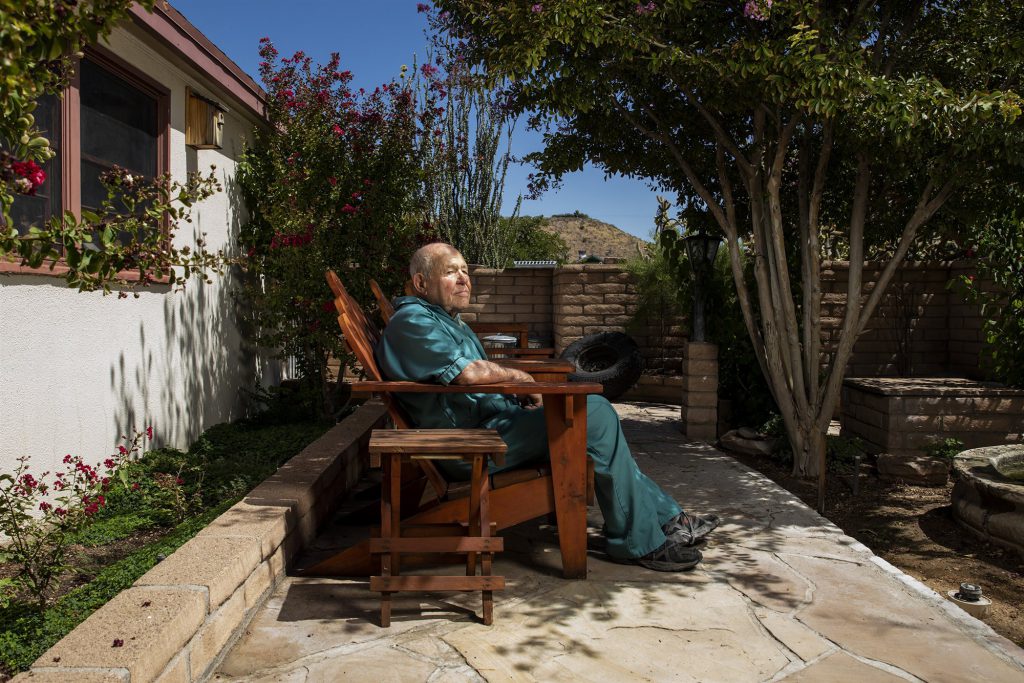
Arizona’s ‘downwinders,’ exposed to Cold War nuclear testing, fight for compensation | nbcnews.com
These Russians aren’t going away
“Labeled “extremists” and “foreign agents”, Fedor Maryasov and Andrey Talevlin put country and courage first.”
By: Oleg Bodrov | beyondnuclearinternational.com
The first time Fedor Maryasov realized that something might be very wrong in his community was as a teenager. Growing up in the uranium mining city of Zarafshan, Uzbekistan, young Fedor and his friends would swim in artificial ponds holding discharge water from the uranium mines. They fished there too, but they began to notice the fish were disfigured by genetic abnormalities, displaying red spots and growths. Still, the authorities were saying nothing. And the teenage boys, like most people in Zarafshan, knew little about how radiation affects living organisms.
NNSA Head Props Up Nuclear Weapons Modernization…Again
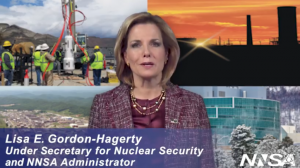 In her September 17, 2020 testimony before before the Senate Armed Services Committee, Lisa E. Gordon-Hagerty, Administrator of the National Nuclear Security Administration, restated the ongoing company line that more money must be spent on the US nuclear weapons stockpile, or the whole enterprise might fall over.
In her September 17, 2020 testimony before before the Senate Armed Services Committee, Lisa E. Gordon-Hagerty, Administrator of the National Nuclear Security Administration, restated the ongoing company line that more money must be spent on the US nuclear weapons stockpile, or the whole enterprise might fall over.
She stated, “The need to now modernize our nuclear weapons stockpile and recapitalize the supporting infrastructure needed to produce and maintain that stockpile has reached a tipping point.”
Ambassador: Time is right for new arms control agreement
“Arguing that its stockpile is small, China has said it would participate only if the U.S. agrees to nuclear parity among all nations. Russia has suggested that if China were part of the pact, other countries would need to be included as well.”
BY: The Associated Press, SUSAN MONTOYA BRYAN | apnews.com
ALBUQUERQUE, N.M. (AP) — The Trump administration has sketched out a framework that it hopes will avoid a three-way arms race as a deadline nears for extending the only remaining nuclear arms control deal with Russia and as China looks to expand its nuclear forces.
Ambassador Marshall Billingslea, the special presidential envoy for arms control, spoke with The Associated Press about negotiations with Russia while touring some of the top nuclear research labs and production sites in the United States.
Arizona’s ‘downwinders,’ exposed to Cold War nuclear testing, fight for compensation
“It’s a travesty, and the government should not be allowed to get away with it,” one Mohave County, Arizona, resident said.
BY: ANITA HASSAN | nbcnews.com

KINGMAN, Ariz. — Danielle Stephens ran her fingers down a long list of her relatives’ names and sighed.
All of them had been diagnosed with cancer. Most of them had died, many before they were 55.
Like Stephens, 81, they had all spent their lives in Kingman, Arizona, where during the Cold War they often watched the early morning sky lit up by orange flashes from atomic bombs detonated at a government testing site in the Nevada desert less than 150 miles north of the city.
“Back then, no one thought the tests were dangerous,” said Stephens, who ran a cattle ranch with her husband.
The list of her family members with cancer grew to 32 in July, when she was diagnosed with stage 4 colon cancer. It is the radiation exposure from those nuclear tests that Stephens believes caused her cancer and that of her family members and scores of others who lived in lower Mohave County in the 1950s and ’60s. Her relatives had breast, colon, thyroid and kidney cancer, all of which have been linked to radioactive fallout.
Biden says US must maintain small force in Middle East, has no plans for major Defense cuts
“The former vice president said the largest readiness issue facing the military is America’s strained relationship with NATO. “They’re worried as hell about our failure to confront Russia diplomatically or other ways, and worried about ‘America First’ meaning ‘America Alone,’” he said.”
By: STEVE BEYNON | STARS AND STRIPES/ stripes.com

DEMOCRATIC NATIONAL COMMITTEE
WASHINGTON — Former Vice President Joe Biden said Thursday that he supports drawing down troops in the Middle East but if elected president would keep a small force there to prevent extremists from posing a threat to the United States and its allies.
“These ‘forever wars’ have to end. I support drawing down the troops. But here’s the problem, we still have to worry about terrorism and [the Islamic State],” Biden told Stars and Stripes in a telephone interview.
He also said he does not foresee major reductions in the U.S. defense budget as the military refocuses its attention to potential threats from “near-peer” powers such as China and Russia.
2019
DIA on Iran nuclear program
A Defense Intelligence Agency report made public this week concludes that Iran’s government remains prepared to pursue nuclear weapons and missiles to deliver them.
ARTICLE BY BILL GERTZ | thewashintontimes.com
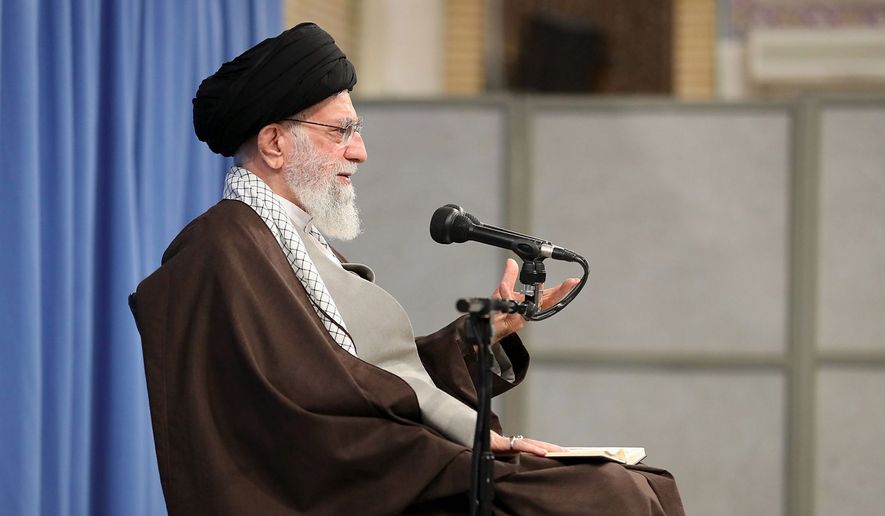
“Iran’s overarching strategic goals of enhancing its security, prestige, and regional influence have led it to pursue nuclear energy and the capability to build missile-deliverable nuclear weapons, if it chooses to do so,” says the report, “Iran Military Power.”
The report says Iran currently has no nuclear weapons and under the 2015 international nuclear deal agreed not to pursue nuclear arms. However, work by Tehran on space launcher vehicles indicates that Iran continues to develop long-range missiles that could be used for nuclear strikes.
While lacking intermediate-range and intercontinental-range missiles, “Tehran’s desire to have a strategic counter to the United States could drive it to develop and eventually field an ICBM,” the report said.
Plutonium Pit Production Workshop 11/19
https://www.facebook.com/NukeWatch.NM/videos/825812604488302/
[embeddoc url=”https://nukewatch.org/wp-content/uploads/2019/11/MK-11-19-19-Pu-Pits-W87-1.pptx” download=”all” viewer=”google”]
Jay Coghlan & Jon Lipsky on the Richard Eeds Show
11/18/19 KTRC Talk Radio 1260 AM: Jay Coghlan of Nuclear Watch New Mexico and Jon Lipsky, the FBI agent who led the 1989 raid investigating environmental crimes that shut down the Rocky Flats Nuclear Bomb Plant
Listen here ↓
santafe.com/podcasts/jay-coghlan-jon-lipsky-on-nuclear-watch-new-mexicos-workshop-on-lanl-and-pits
1:30PM TODAY on KTRC Talk Radio 1260 AM: Marylia Kelly of Tri Valley CARES
Tune in here ↓
FBI agent who raided Rocky Flats Plant to speak
Lipsky, who continues to raise concerns about the dangers of radioactive waste, will be in Santa Fe this week for a workshop organized by Nuclear Watch New Mexico, which opposes plans for pit production at Los Alamos National Laboratory. The event takes place Wednesday evening at the Mud Gallery.
ARTICLE BY: MARK OSWALD | abqjournal.com
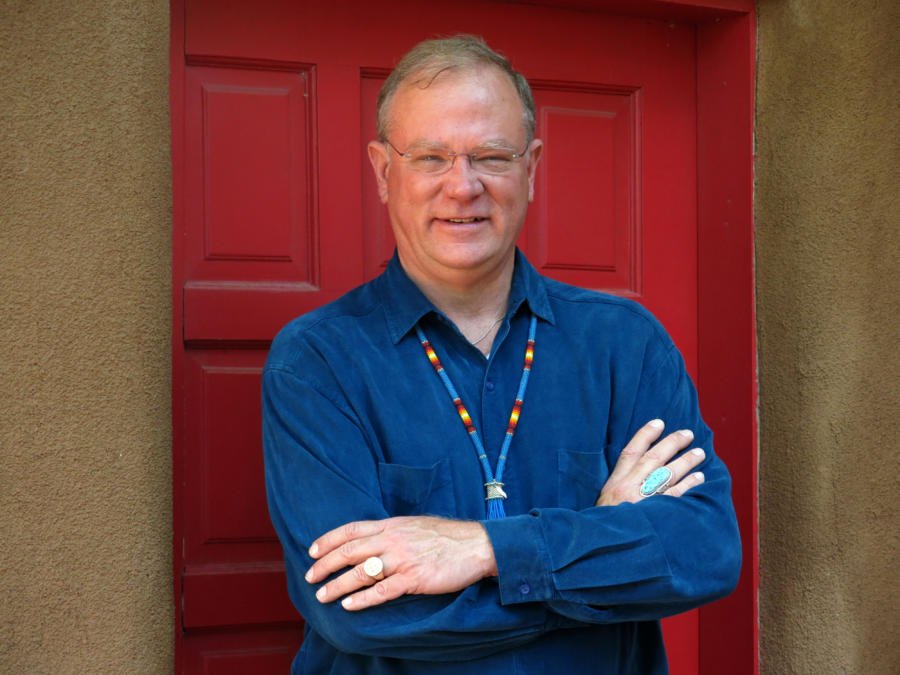
SANTA FE, N.M. — Jon Lipsky is a retired federal agent with a big notch in his gun – he shut down a plant that made plutonium parts for the nation’s nuclear weapons.In an episode unique in American history, in June 1989, Lipsky led the FBI’s raid on the U.S. Department of Energy’s Rocky Flats Plant in Colorado, where the cores of nuclear weapons, or “pits,” were made.
Later, under a plea deal, the private contractor that ran the plant for the DOE – Rockwell International – admitted to four felonies and six misdemeanors for environmental crimes and paid the government $18.5 million. The plant formally closed forever in 1992 and the U.S. has made only a handful of pits since.
3:00PM TODAY on KTRC Talk Radio 1260 AM: Jay Coghlan of Nuclear Watch New Mexico and Jon Lipsky, the FBI agent who led the 1989 raid investigating environmental crimes that shut down the Rocky Flats Nuclear Bomb Plant
Tune in here ↓
“As the budget for expanded production of nuclear weapons keeps going up and up, the effort to clean up past production continues to fail, threatening future generations.”
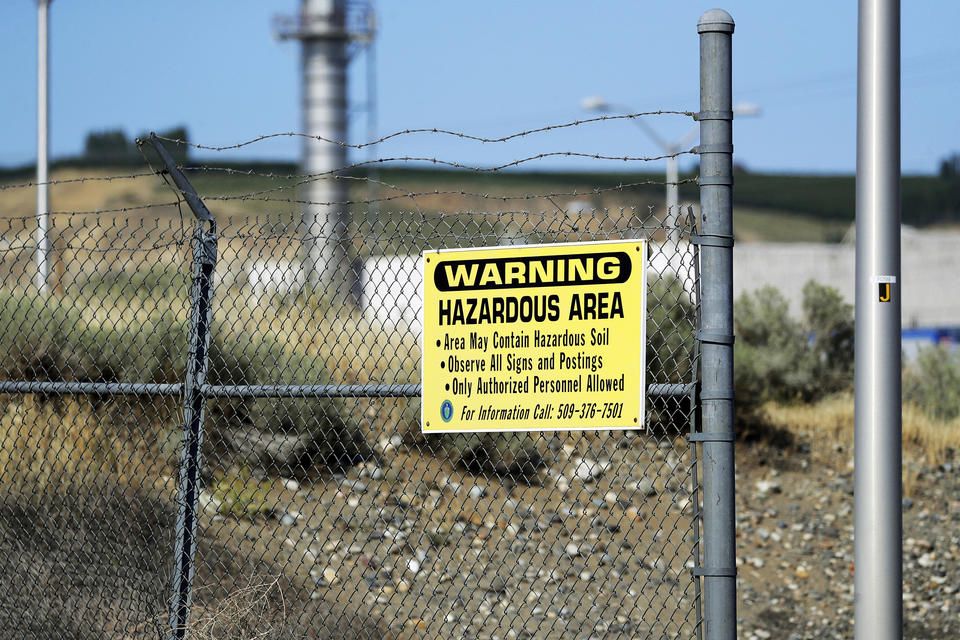
Already 12 years behind schedule, a project at the Hanford nuclear complex meant to transform millions of gallons of radioactive waste into benign glass faces yet another delay.
Feds aim to push back the opening of ‘glassification’ plants, while state officials say the Department of Energy has been underfunding the cleanup of America’s most poisoned site.
ARTICLE BY: JOHN STANG | crosscut.com
PODCAST: Living On The Edge November 14, 2019 – LANL & Plutonium
Scott Kovac of Nuclear Watch New Mexico and Jon Lipsky, the FBI agent who led the 1989 raid investigating environmental crimes that shut down the Rocky Flats Nuclear Bomb Plant join Xubi to talk about Nuclear weapons, Nuclear clean up and Pit production plans at LANL.
12 years and counting: Effort to lock Hanford’s radioactive waste in glass faces more delays
Feds aim to push back the opening of ‘glassification’ plants, while state officials say the Department of Energy has been underfunding the cleanup of America’s most poisoned site.
Already 12 years behind schedule, a project at the Hanford nuclear complex meant to transform millions of gallons of radioactive waste into benign glass faces yet another delay.
ARTICLE BY: JOHN STANG | crosscut.com

Since the 1990s, Washington state has been prodding the U.S. Department of Energy to build two “glassification” plants at Hanford that would permanently contain the waste stored in aging tanks on the site. Delays have added to the cost of the project, now estimated at $17 billion.
Glassification was supposed to begin in 2007. On the current schedule, lower-level radioactive waste wouldn’t be entombed in glass cylinders until 2023. And the high-level radioactive wastes? At present, glassification of that waste is set to begin in 2036, 29 years behind the original deadline.
The Energy Department wants to push that target back even further, and last month began negotiations with state leaders to do so. Those negotiations are also expected to address whether additional tanks must be built to hold the waste, a move the state supports, but which the DOE has been reluctant to adopt
“We want to try to come up with a schedule that doesn’t have to be revised every few years,” said Suzanne Dahl, section manager for tank waste management with the state Department of Ecology. Dahl noted that the longer the project takes, the more it will cost the federal government.
Located dead center in the 584-square-mile Hanford Nuclear Reservation is the most radiologically and chemically polluted spot in the Western Hemisphere. The site’s 177 underground tanks hold 56 million gallons of radioactive fluids, sludges and chunks, mixtures of roughly 100 different substances.
2018
George Shultz: We Must Preserve This Nuclear Treaty
BY GEORGE P. SHULTZ nytimes.com
Mr. Shultz was a secretary of state in the Reagan administration.
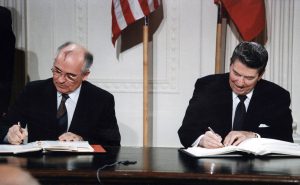
Nuclear weapons are a threat to the world. Any large-scale nuclear exchange would have globally catastrophic consequences. Conscious of this reality, President Ronald Reagan and Mikhail Gorbachev, the leader of the Soviet Union, worked in the 1980s to reduce the number of nuclear weapons, with the ultimate goal of getting rid of them.
The Intermediate-Range Nuclear Forces Treaty, signed in 1987, was a major step toward this goal, eliminating a large class of nuclear weapons that were viewed as particularly destabilizing. The treaty is still in force, although both the Obama and Trump administrations have said that Russia is in violation. Whatever the case, we need to preserve the agreement rather than abandon it, as President Trump has threatened to do.
WIPP: Waste Calculation Change Discussed
BY ADRIAN C. HEDDEN, Carlsbad currentargus.com
WIPP:
“Calculation change will not impact facility’s capacity”
[We at NukeWatch do believe that this proposed change WILL expand WIPP’s capacity and are working hard to stop it.]
Officials at the Waste Isolation Pilot Plant said a proposed modification to facility’s permit to dispose of nuclear waste will have little impact on WIPP operations or its maximum capacity for emplacement. The modification regards how the facility tracks the volume of transuranic (TRU) waste permanently stored in the underground repository.
NNSA Review of UPF Compounds Legal Violations, Environmental Groups Say
OCTOBER 18, 2018
NNSA Review of UPF Compounds Legal Violations, Environmental Groups Say
BY EXCHANGE MONITOR
A September review by the Department of Energy compounded the agency’s alleged transgressions of federal environmental law stemming from a 2016 design change to a next-generation uranium plant under construction at the Oak Ridge Site in Tennessee, a band of environmental groups said this week in an amended federal lawsuit.
The supplemental analysis DOE’s semiautonomous National Nuclear Security Administration (NNSA) published last month on the Uranium Processing Facility “not only failed to correct the NEPA [National Environmental Protection Act] violations identified in Plaintiffs’ original Complaint, but also revealed additional ways in which the NNSA was continuing to violate NEPA,” the Oak Ridge Environmental Peace Alliance, Nuclear Watch New Mexico, and the Natural Resources Defense Council wrote in an amended complaint filed Monday in the U.S. District Court for Eastern Tennessee.
Atomic Bomb Survivors Urge Trump Not To ‘Turn Clock Back’
BY AI TANABE, Staff Writer The Asahi Shimbun
Hibakusha atomic bomb survivors admonished U.S. President Donald Trump for threatening to walk away from the Intermediate-range Nuclear Forces (INF) treaty in a protest letter sent to the U.S. Embassy in Tokyo on Oct. 22. The note, addressed in Japanese to the commander-in-chief, was compiled by five hibakusha groups in Nagasaki expressing their concerns over the proposed withdrawal from the 1987 treaty signed by the United States and the Soviet Union.
The groups stated that if the United States pulls out of the treaty, “global momentum for nuclear disarmament will fade away while the likelihood of a nuclear war crisis will rise.”
Feds Test Aquifer for Contamination of RDX
THE LOS ALAMOS MONITOR ONLINE
Feds Test Regional Aquifer for More LANL Contamination of High Explosives
Monday, October 22, 2018
Chemicals used to make high explosives have reached the regional water supply, the Los Alamos federal environmental manager discovered two years ago.
The contractor for the Department of Energy’s Environmental Management field office is drilling a second well to find out just how much contamination has occurred.
Critics: WIPP proposal would allow more nuclear waste storage
Critics: WIPP proposal would allow more nuclear waste storage
By Rebecca Moss | sfnewmexican.com
Sep 19, 2018 Updated Sep 19, 2018
As the public comment period closes Thursday on modifications to a state permit allowing the federal government to store nuclear waste at a southeastern New Mexico repository, critics are decrying the changes as an effort to increase storage capacity at the site and are accusing the state Environment Department of rushing the approval process.
The U.S. Department of Energy and Nuclear Waste Partnership LLC, a private contractor that manages the Waste Isolation Pilot Plant in Carlsbad, submitted a request early this year to change the way radioactive waste at the site is measured.
They want to measure the waste by the volume inside each waste drum rather than by the total number of containers at the site. WIPP can store a maximum of 6.2 million cubic feet of transuranic waste — discarded tools, soil and equipment contaminated by plutonium and other radioactive materials — in its underground salt-bed caverns. But its capacity has been measured so far by the total volume of the waste drums, not the materials held inside them.
Mini-nukes: Still a horrible and dangerous idea
Mini-nukes: Still a horrible and dangerous idea
By John Mecklin, September 19, 2018
Bulletin of the Atomic Scientists
Perhaps the most dangerous weapons program the US government has recently pursued involves a low-yield nuclear warhead for submarine-launched nuclear missiles. The arguments against development of such “small nukes” are legion and overwhelmingly compelling. In fact, almost exactly one year ago, I laid out some of those arguments in an article headlined, “Mini-nukes: The attempted resurrection of a terrible idea.” And, I said then, don’t just take my word for it; read the analysis of Jim Doyle, a former longtime technical staffer at the Los Alamos National Laboratory. Simply put, the availability of “small” nuclear warheads increases the likelihood that nuclear weapons will be used, and any use of nuclear weapons easily could (some experts might say “inevitably would”) lead to general nuclear war and the end of civilization.
In the last year, however, the Trump administration released a Nuclear Posture Review calling for development of a low-yield warhead for submarine-launched ballistic missiles. Congress subsequently passed a defense authorization act that includes money for the program, and another bill allocates millions in the Energy Department budget specifically for pursuit of the new warhead.
A September 11th Catastrophe You’ve Probably Never Heard About
In 1957, America narrowly averted a nuclear meltdown at the Rocky Flats plant in Colorado. A new book explores how close we all came to disaster.
ANDREW COHEN | theatlantic.com
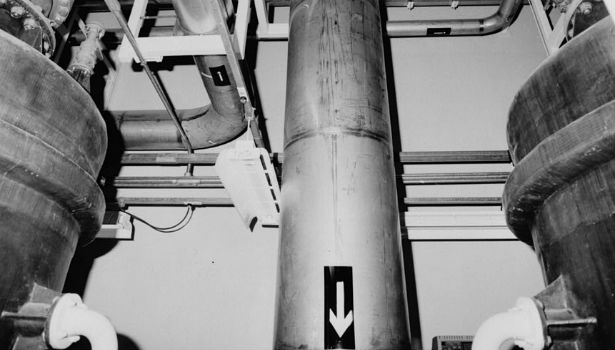
New Mexico Senators Speak Out Over Order They Say Would Hamper Nuclear Safety Board
New Mexico Senators Speak Out Over Order They Say Would Hamper Nuclear Safety Board
They want Congress to suspend a move that would limit access to information about facilities and could hinder the panel’s ability to oversee worker health and safety.
by Rebecca Moss, Santa Fe New Mexican,
Aug. 31, 5 a.m. EDT
This article was produced in partnership with The Santa Fe New Mexican, which is a member of the ProPublica Local Reporting Network.
New Mexico’s senators are asking Congress to block a Department of Energy order that would limit a federal board’s access to information about nuclear facilities and could hinder its ability to oversee worker health and safety.
In a letter sent Wednesday to the leaders of a Senate appropriations subcommittee, Democratic Sens. Martin Heinrich and Tom Udall also asked their colleagues to block impending staff cuts and a broad reorganization at the Defense Nuclear Facilities Safety Board. New Mexico is home to three of the 14 nuclear facilities under the board’s jurisdiction: Los Alamos National Laboratory, Sandia National Laboratories and the Waste Isolation Pilot Plant.
“We feel strongly that these two matters facing the [safety board] and its future must be suspended while Congress and the public have time to review and offer constructive feedback” on how to maintain and improve the board, the senators wrote to Sens. Lamar Alexander, R-Tenn., and Dianne Feinstein, D-Calif., the chairman and ranking member of the energy and water development subcommittee.
2017
UCS: North Korean ICBM in latest test appears able to reach major US cities, including New York
Union of Concerned Scientists Reports that, like the previous test on July 8, North Korea launched its missile on a highly lofted trajectory; a standard intercontinental trajectory, accounting for the Earth’s rotation, would give it range to hit New York City, and only 100 kilometers short of Washington DC.
Black Saturday, October 27, 1962.
In the midst of the Cuban Missile Crisis, this was the day Vasily Arkhipov did not use the nuclear torpedo against the US ship dropping depth charges on it. It was also the day a US U2 was shot down over Cuba, killing the pilot. It was also the day this happened.
60 yrs ago, the biggest nuclear weapon in the US arsenal was accidentally dropped 5 miles south of Albuquerque, New Mexico
On May 27, 1957, 5 miles south of the Albuquerque airport, a Mark 17 H-bomb (pictured at left) was accidentally dropped from a B-36 Peacemaker on it’s way to Kirtland AFB. The plutonium pit was not on board, but the fissile ‘spark plug’ detonated. Bits of the bomb, the biggest ever deployed by the US at 15-20 megatons, could still be found in the area (see picture below). But the authors of this 2010 report urged the collecting public to hurry, as the area would soon be covered over by a development called “Mesa del Sol”. And so it now is.(source: Carl Willis, “Albuquerque, Ground Zero”)
Annual Sackcloth and Ashes Hiroshima Day Peace Vigil at Los Alamos, NM
Annual Sackcloth and Ashes Hiroshima Day Peace Vigil at Los Alamos, NM
Saturday, August 5th, 2017, people will gather at 2:00 p.m. at Ashley Pond Park in Los Alamos, NM for the annual sackcloth and ashes peace vigil to commemorate Hiroshima Day. There will be a quiet walk, then sitting in sackcloth and ashes for 30 minutes, then returning to the park, where friends will reflect together on the current UN movement to outlaw nuclear weapons, with Rev. John Dear and Jay Coghlan of Nukewatch. Bring water, an umbrella and a peace sign.
Every year the Pax Christi NM sponsors this peace vigil commemorating the 1945 bombing of Hiroshima and Nagasaki. “Symbols are very powerful. They bring it all home,” says Father John Dear of Pax Christi New Mexico, the state chapter of an international Catholic peace movement.
Folks slip on sack cloths and carry bags of ashes to depict penitence and conversion to nonviolence, as portrayed in a story from the Book of Jonah in the Bible.
“Jonah used sack cloths and ashes in Nineveh. Two hundred years ago in
Boston, they used tea. Mahatma Gandhi used salt,” Dear says. “With this
symbol, we reclaim an ancient biblical image to show our political and
spiritual opposition to nuclear weapons and the work of Los Alamos.”
FY 2018
LANL FY 2018 Budget Request
Click to view full PDF with annotations table
Note that the percentage of the LANL budget request for core nuclear weapons activities has risen to 70%.
NNSA FY 2018 Budget Request
Los Alamos Nuclear Weapons Activities Reaches 70% Of Annual Budget
Make no doubt about it, Los Alamos National Laboratory is a nuclear weapons research, development, and production facility. In this year’s FY18 Congressional Budget Request:
70% of the Lab’s budget is Nuclear Weapons Activities
11% is for Nuclear Nonproliferation
10% for ‘Work For Others’
8% Cleanup
1% Science
.4% Nuclear Energy
.2% Renewables

FY 2018 Congressional Budget Request
(In billions of dollars)
This chart and the FY18 LANL Lab tables to back it up are here
New nuclear ‘pit’ production at LANL is unnecessary
From the Albuquerque Journal
New nuclear ‘pit’ production at LANL is unnecessary
By Jay Coghlan
Friday, July 21st, 2017 at 12:02am
SANTA FE, N.M. — The Center for Public Integrity recently published a series of articles on nuclear safety lapses in plutonium pit production at the Los Alamos lab that captured a lot of national attention.
Plutonium pits are the fissile cores of nuclear weapons that initiate the thermonuclear detonation of modern weapons. The articles were largely based on the National Nuclear Security Administration’s annual contractor Performance Evaluation Reports. Those reports are publicly available only because Nuclear Watch New Mexico successfully sued for them in 2012.
The former plutonium pit production site, the Rocky Flats Plant near Denver, was shut down by a 1989 FBI raid investigating environmental crimes. A special grand jury indicted both Department of Energy (DOE) officials and the contractor, but a federal judge quashed the indictments at the urging of the local federal attorney general. It was only by sheer luck that a major plutonium fire on Mother’s Day 1969 didn’t contaminate Denver with highly carcinogenic plutonium.
I specifically recall senior DOE officials promising New Mexicans 20 years ago that serious lessons were learned from Rocky Flats and that re-established plutonium pit production at the Los Alamos National Laboratory (LANL) would always be safe. Since then, the lab has spent billions of taxpayers’ money on plutonium pit production but, as the recent articles document, LANL still can’t do it safely.
As the articles reported, a serious nuclear criticality accident was narrowly averted in July 2011, which resulted in the three-year shutdown of LANL’s main plutonium facility. Nevertheless, according to the fiscal year 2011 LANL Performance Evaluation Report, the lab contractor was paid $50 million in pure profit for that year.
In 2014, a radioactive waste barrel improperly prepared by LANL ruptured underground at the Waste Isolation Pilot Plant (WIPP), shutting down that multi-billion-dollar facility for nearly three years. Radioactive waste disposal at WIPP will remain constrained for years, raising the question of where future LANL bomb-making wastes will go.
Congress has required the Los Alamos lab to quadruple plutonium pit production, regardless of the technical needs of the stockpile. The requirement was drafted by professional staff on the House Armed Services Committee, one of whom was originally from the Sandia nuclear weapons lab.
That the existing stockpile doesn’t need pit production is demonstrated by the fact that none has been scheduled since 2011 when LANL finished up the production run that was stopped when Rocky Flats was shut down.
At NukeWatch’s request, former U.S. Sen. Jeff Bingaman (D-NM) required an independent study of the lifetimes of pits. The expert conclusion was that plutonium pits last at least a century, more than double government estimates (the oldest pits in the stockpile are now around 45 years old). Moreover, there are some 20,000 existing plutonium pits stored at the Pantex Plant near Amarillo, Texas.
Future plutonium pit production is for a new so-called “Interoperable Warhead” that is supposed to function both as a land-based ICBM and a sub-launched nuclear warhead. The nuclear weapons labs are pushing this $13 billion make-work project that the Navy doesn’t want.
Ironically, new-design pits for the Interoperable Warhead may hurt national security because they cannot be tested in a full-scale nuclear weapons test or, alternatively, testing them would have severe international proliferation consequences.
Given all this, why expand plutonium pit production when apparently it can’t be done safely and may decrease, not increase, our national security? One strong reason is the huge contractor profits to be had under the $1 trillion-plus “modernization” of the nuclear weapons stockpile and production complex started under Obama, which Trump promises to expand. Far from just “modernization,” existing nuclear weapons are being given new military capabilities, despite denials at the highest levels of government.
The directors of the Livermore, Sandia and Los Alamos nuclear weapons labs in truth wear two hats – the first as lab directors, the second as presidents of the for-profit limited liability corporations running the labs. This inherent conflict of interest skews U.S. nuclear weapons policy and should be brought to an end.
The New Mexico congressional delegation kowtows to the nuclear weapons industry in our state. I specifically call upon Senators Tom Udall and Martin Heinrich to certify within this calendar year that future plutonium pit production at the Los Alamos Lab will be safe, or otherwise end their support for it.
Jay Coghlan is the director of Nuclear Watch New Mexico.

US Still On Track For $1 Trillion Nuclear Weapons Modernization
Here’s a breakdown of nuclear weapons costs. The average is $34 billion per year.

DOD and DOE are undertaking an extensive effort to sustain and modernize U.S. nuclear weapons capabilities. This effort is expected to take decades and cost hundreds of billions of dollars. Congress requires submission of an annual report to congressional committees on DOD’s and DOE’s plans for related matters and includes a provision that GAO review aspects of that joint report. GAO has previously recommended that future joint reports provide more thorough documentation of methodologies and context for significant changes from year to year.
GAO analyzed the departments’ internal plans and budget estimates for sustaining and modernizing the nuclear deterrent and interviewed DOD and DOE officials. The fiscal year 2017 joint report continues to omit explicit information about all assumptions and limitations in DOD’s and DOE’s methodologies and reasons for year-to-year programmatic changes in some estimates—information that could improve transparency for decision makers in Congress.
Read the GAO Report Here
Fukushima Robot Finds Potential Fuel Debris Hanging Like Icicles in Reactor Three
TEPCO plans to decide on the procedure for removing the melted fuel from each unit this summer; it will confirm the procedure for the first reactor during fiscal 2018 ending in March 2019, with removal slated to begin in 2021. Decommissioning the reactors will cost $72 billion.
2016
Russia Has Pulled Out Of The Troubled MOX Project
Russia has given many expliantions for their recent exit from the MOX pact. Overall it is clear that MOX is a “good idea gone bad”. For more see the links below.
Citing “the threat to strategic stability posed by US hostile actions against Russia”. ref
Russia’s Lavrov: Russia’s MOX pact exit is a signal to Washington that: “speaking in the language of sanctions & ultimatums won’t work”
The Russian Non-Proliferation Department’s official reason: The US did not officially inform on planned change of PU disposal method (from MOX plant to WIPP disposal) as required in 2000 pact.
Join the Conversation- PSR Nukebusters Short Film Contest 1st Prize
Physicians for Social Responsibility: This film by Jonathan Deaton won the top award in the Student category. (more award winners)
NukeWatch NM Heads to DC To Stop U.S. Nuclear Weapons “Trillion Dollar Trainwreck”
NukeWatch NM Heads to Washington to Press Congress, Obama Officials
To Stop U.S. Nuclear Weapons “Trillion Dollar Trainwreck” —
LANL Whistleblower Chuck Montaño to Be Honored
Three members of Nuclear Watch New Mexico will visit Washington, DC from April 17 to April 20 to oppose U.S. Department of Energy (DOE) nuclear weapons projects, which they say will lead to a “trillion dollar trainwreck” through out-of control spending, more radioactive waste generation, and weapons proliferation. The group will meet with the New Mexican congressional delegation, committee staffers, and administration officials with responsibility for U. S. nuclear policies to press for new funding priorities.
The Nuclear Watch NM delegation will be working with more than 50 colleagues from two dozen other states who are participating in the 28th annual Alliance for Nuclear Accountability “DC Days.” They will distribute copies of the ANA’s new report “Trillion Dollar Trainwreck” a detailed analysis of the Obama Administration’s latest plans to spend more money on nuclear weapons without truly enhancing U.S. security.
Jay Coghlan, NukeWatch director and president of the ANA Board of Directors, said, “Massive spending on nuclear weapons ‘modernization’ creates potential catastrophic risks for U.S. taxpayers, the environment and world peace. We will press policy-makers to cut programs that fund dangerous DOE boondoggles. The money saved should be redirected to dismantling weapons and cleaning up the legacy of nuclear weapons research, testing and production.”
NukeWatch NM Steering Committee member Chuck Montaño will receive recognition during DC Days from the Alliance for Nuclear Accountability (ANA) at a reception on April 19, 2015, at the Hart Senate Office Building. He, along with California’s senior U.S. Senator Diane Feinstein and ranking member of the House Armed Services Committee Rep. Adam Smith (D.-WA), will be among those honored by ANA for their efforts to hold the nuclear weapons military-industrial complex accountable. Montaño is being recognized for his advocacy confronting whistleblower and employee abuse, managerial malfeasance and fraudulent activity, all of which he documents in his recently released book detailing the chain of events that led to him becoming a federally protected whistleblower.
Montaño commented that he wrote Los Alamos: Secret Colony, Hidden Truths, “so people can appreciate the Lab’s full impact and legacy, not just what institutional leaders want the public to remember. There are important events I document for posterity, which may otherwise be hidden or erased from memory, and I didn’t want that to happen.”
Jay Coghlan, NukeWatch director, said, “I am very proud of Chuck Montaño, especially since he’s a Nuke Watch Steering Committee member as well. We depend on people like him with the inside story to help keep the Lab safe for communities and workers alike. It’s gratifying to see that the Alliance for Nuclear Accountability and its many member organizations appreciate his efforts.”
Mr. Montaño, a lifelong Santa Fe area resident, was employed at the Los Alamos National Laboratory for 32 years, until his forced retirement from the lab in 2010. He is also the former Director of Fraud and Special Audits for the Office of the New Mexico State Auditor.
The Alliance for Nuclear Accountability (ANA) is a network of three-dozen local, regional and national organizations representing the concerns of communities downwind and downstream from U.S. nuclear weapons production and radioactive waste disposal sites.
# # #
Chuck Montaño’s book Los Alamos: Secret Colony, Hidden Truths
is available at www.losalamosdiary.com
NukeWatch NM Heads to Washington to Press Congress, Obama Officials To Stop U.S. Nuclear Weapons “Trillion Dollar Trainwreck”
Santa Fe, NM
LANL Whistleblower Chuck Montaño to Be Honored
Three members of Nuclear Watch New Mexico will visit Washington, DC from April 17 to April 20 to oppose U.S. Department of Energy (DOE) nuclear weapons projects, which they say will lead to a “trillion dollar train-wreck” through out-of control spending, more radioactive waste generation, and weapons proliferation. The group will meet with the New Mexican congressional delegation, committee staffers, and administration officials with responsibility for U. S. nuclear policies to press for new funding priorities.
Jay Coghlan, NukeWatch director and president of the ANA Board of Directors, said,
“Massive spending on nuclear weapons ‘modernization’ creates potential catastrophic risks for U.S. taxpayers, the environment and world peace. We will press policy-makers to cut programs that fund dangerous DOE boondoggles. The money saved should be redirected to dismantling weapons and cleaning up the legacy of nuclear weapons research, testing and production.”
Studies by Once Top Secret Government Entity Portrayed Terrible Costs of Nuclear War
NESC reports included both Soviet and US first strike scenarios
National Security Archive Electronic Briefing Book No. 480. Posted July 22, 2014.
“The NESC reports on nuclear war were multi-volume, highly classified studies and none has ever been declassified in their entirety. The summaries published here today- for the annual reports from 1957 to 1963- provide a glimpse of the full reports, although important elements remain classified. Besides the summaries and fuller reports for 1962 and 1963, today’s posting includes a number of special studies prepared by the NESC, including an especially secret report requested by President Eisenhower that led to the production of the comprehensive U.S. nuclear war plan in 1960, the Single Integrated Operational Plan (SIOP)…”
Watchdogs Demand Expedited Release of Lab Evaluations to E-FOIA Reading Room
Watchdogs File Second FOIA Request for Los Alamos and Sandia Labs Evaluations,
Demand Expedited Release to E-FOIA Reading Room
Santa Fe, NM – Nuclear Watch New Mexico has filed a second request under the Freedom of Information Act (FOIA) for the National Nuclear Security Administration’s FY 2015 Performance Evaluation Reports for the Los Alamos and Sandia National Laboratories. Nuclear Watch filed its first request on December 22, 2015, which has still not been fulfilled despite the law’s statutory requirement that FOIA requests be honored within 20 working days. Because of that, Nuclear Watch is demanding expedited processing and posting of these reports to an electronic FOIA reading room, as required by the 1996 E-FOIA amendments.
In 2009 the National Nuclear Security Administration (NNSA) began to withhold Performance Evaluation Reports without explanation. Accordingly, Nuclear Watch filed a FOIA request for the FY 2009 Los Alamos Lab Performance Evaluation Report that NNSA denied. Nuclear Watch appealed that decision to the Department of Energy’s Office of Hearings and Appeals, which upheld the denial on the basis that the reports contained proprietary information, contrary to the openness and transparency of previous years.
Since that time, the NNSA’s nuclear weapons complex has been rocked by constant cost overruns, security scandals, illegal lobbying and the closure of the multi-billion dollar Waste Isolation Pilot Plant after a faulty radioactive waste drum from LANL ruptured and contaminated workers. It is Nuclear Watch’s belief that American taxpayers deserve to know how their money is being spent on substandard performance by nuclear weapons contractors such as Bechtel, the University of California and Lockheed Martin.
In January 2012 Nuclear Watch filed a FOIA request for the FY 2011 Performance Evaluation Reports of all eight NNSA sites, which the agency again denied. However, rather than fruitlessly appealing to the DOE Office of Hearings and Appeals, the organization filed a lawsuit on March 28, 2012, and began to receive the PERs six days later. Since then the NNSA has publicly released its FY 2012, 2013 and 2014 PERs without having to be compelled by FOIA requests or citizen lawsuits.
However, the National Nuclear Security Administration has not released its FY 2015 Performance Evaluation Reports, which we know have been completed at least for the Los Alamos Lab. On December 17, 2015, LANL Director Charlie McMillan reported to his employees that the Los Alamos National Security, LLC management and operations contract would be put out to bid because of substandard performance as documented by the Performance Evaluation Report.
These reports have been of keen media interest. After its FOIA request was not honored the Albuquerque Journal recently editorialized:
Money to run the labs comes from U.S. taxpayers, who deserve to know how it is being spent and if contractors are doing their jobs in a timely and efficient manner. Past shoddy attention to detail by NNSA contractors and lackadaisical oversight by the U.S. Department of Energy are some of the reasons why the evaluations are critical to protecting national security. The potential search for new contractors makes the evaluations especially critical. They should be made public post haste.
Similarly a respected journalist with the Knoxville News Sentinel reported that his FOIA request was left unfulfilled, and noted that, “The performance reports contain valuable information on how the NNSA contractors are carrying out their missions involving billions of taxpayer dollars annually.” In addition, at least two other nonprofit watchdog organizations, the Oak Ridge Environmental and Peace Alliance and SRS Watch, have FOIAed for NNSA’s Performance Evaluation Reports without success.
These multiple requests by different entities are particularly important because according to the Department of Justice the 1996 E-FOIA amendments
create a new category of records that will be required to receive “reading room” treatment — a category consisting of any records processed and disclosed in response to a FOIA request that “the agency determines have become or are likely to become the subject of subsequent requests for substantially the same records… Second, the amendments will require agencies to use electronic information technology to enhance the availability of their reading room records… To meet this new requirement through on-line access, agencies should have Internet or World Wide Web sites prepared to serve this “electronic reading room” function.
Jay Coghlan, Nuclear Watch New Mexico director, commented, “It is unconscionable that the National Nuclear Security Administration withholds information from the American taxpayer on how fat contractors who constantly bust budgets are paid, especially when these same contractors always have their hands out for yet more taxpayer money for nuclear weapons forever. The question is, what do NNSA and its contractors have to hide? To answer that, Nuclear Watch will not only demand that the Performance Evaluation Report be publicly released, but that from this point on the reports be automatically posted to an electronic FOIA reading room as the law requires. The American taxpayer should not have to fight this battle year after year just to keep greedy nuclear weapons contractors accountable.”
# # #
Nuclear Watch New Mexico’s second Freedom of Information Act request for the Los Alamos and Sandia Performance Evaluation Reports is available at
https://nukewatch.org/importantdocs/resources/NWNM-FOIA-FY15-PERs-4-6-16.pdf
The Albuquerque Journal March 24, 2016 editorial “Tardy posting of NNSA evaluations unacceptable” is available at
https://web.archive.org/web/20160407101502/http://www.abqjournal.com/745237/opinion/tardy-posting-of-nnsa-evaluations-unacceptable.html
Knoxville News Sentinel reporter Frank Munger’s blog post is available at
http://knoxblogs.com/atomiccity/2016/03/14/what-to-think/
The Department of Justice quote is from FOIA Update, Vol. XVII, No. 4 1996
https://www.justice.gov/oip/blog/foia-update-congress-enacts-foia-amendments
NNSA’s Performance Evaluation Reports from 2007 to 2014 are available at
Watchdogs Denounce New Consent Order on Los Alamos Lab Cleanup
For immediate release March 30, 2016
Contacts: Jay Coghlan, 505.989.7342, jay[at]nukewatch.org
Scott Kovac, 505.989.7342, scott[at]nukewatch.org
Watchdogs Denounce New Consent Order on Los Alamos Lab Cleanup
Santa Fe, NM – Today, the New Mexico Environment Department (NMED) issued a new draft Consent Order that in theory will govern cleanup at the Los Alamos National Laboratory (LANL). Instead, the new Consent Order is a giveaway to the Department of Energy and the Lab who are intent on creating yet more radioactive waste from expanded nuclear weapons production.
Jay Coghlan, Nuclear Watch New Mexico Director, commented, “The nuclear weaponeers plan to spend a trillion dollars over the next 30 years completely rebuilding U.S. nuclear forces. Meanwhile, cleanup at the Los Alamos Lab, the birthplace of nuclear weapons, continues to be delayed, delayed, delayed. Real cleanup would be a win-win for New Mexicans, permanently protecting our water and environment while creating hundreds of high paying jobs. But yet the Environment Department fails New Mexicans by failing to enforce cleanup at Los Alamos.”
While announcing the new Consent Order NMED Secretary Ryan Flynn claimed that the old Consent Order process did not work. Nuclear Watch agrees that the old Consent Order failed, but that’s because Secretary Flynn granted more than 150 milestone extensions at the Lab’s request, effectively eviscerating it.
LANL is key to the trillion dollar rebuilding of nuclear forces as the premier nuclear weapons design lab and the nation’s sole production site for plutonium pit triggers, the most critical nuclear weapons components. Funding for Department of Energy (DOE) nuclear weapons programs is nearly double historic Cold War averages, with around $1.5 billion spent annually at LANL alone. In contrast, funding for Lab cleanup has been cut to $189 million for FY 2017, with only approximately a third going to actual cleanup (one-third goes to pensions and another third to safeguard improperly treated radioactive waste barrels, one of which ruptured and closed the multi-billion dollar Waste Isolation Pilot Plant).
The original 2005 Consent Order required DOE and LANL to investigate, characterize, and clean up hazardous and mixed radioactive contaminants from 70 years of nuclear weapons research and production. It also stipulated a detailed compliance schedule that the Lab was required to meet. Ironically, the last milestone, due December 6, 2015, required a report from LANL on how it successfully cleaned up Area G, its largest waste dump. However, real cleanup remains decades away, if ever. Instead, the Lab plans to “cap and cover” Area G, thereby creating a permanent nuclear waste dump in unlined pits and shafts, with an estimated 200,000 cubic yards of toxic and radioactive wastes buried above the regional groundwater aquifer, four miles uphill from the Rio Grande.
A few of the serious deficiencies of the new draft Consent Order are:
[Quotes are from the new draft Consent Order followed by page numbers]
• “The Parties agree that DOE’s project’s plans and tools will be used to identify proposed milestones and targets.” P. 27. “DOE shall define the use of screening levels and cleanup levels at a site…” P. 31. This puts the Department of Energy in the driver’s seat, not the New Mexico Environment Department.
• “DOE shall update the milestones and targets in Appendix B on an annual basis, accounting for such factors as… changes in anticipated funding levels.” P. 28. Therefore the new Consent Order will be held hostage to DOE’s budget, which recently cut LANL’s cleanup funding. This is directly opposite to the intent of the original Consent Order, which was to compel DOE and LANL to get increased funding for accelerated cleanup.
• “… [DOE and NMED] shall meet to discuss the appropriation and any necessary revision to the forecast, e.g. DOE did not receive adequate appropriations from Congress…” P. 29. Again, the new Consent Order and therefore cleanup at LANL will be held hostage to DOE funding, when DOE’s own track record makes clear that its priority is expanded nuclear weapons production paid for in part by cutting cleanup and nonproliferation programs.
• “If attainment of established cleanup objectives is demonstrated to be technically infeasible, DOE may perform risk-based alternative cleanup objectives…” P. 33. DOE can opt out because of “impracticability” or cost of cleanup. P. 34. This creates giant loopholes that threaten comprehensive cleanup at LANL.
• The new draft Consent Order explicitly states that public participation requirements do NOT apply to future modifications of the Order. P. 24. This is the opposite of what the original Consent Order required, which made a point of incorporating the public process requirements of federal environmental law. Nuclear Watch New Mexico maintains that full public participation requirements apply to the new Consent Order as well, including its very formulation as a modification of the old Consent Order. That full public participation process requires a public hearing if there are unresolved issues, which NMED has preemptively rejected, a position that may be of questionable legality.
On January 20, 2016, Nuclear Watch New Mexico formally notified LANL and DOE that it intends to sue them for failing to meet compliance milestones in the old Consent Order. We still expect to take that action sometime after the required 60 day notice period, as in our view this new Consent Order does nothing to remedy those violations.
# # #
The new draft Consent Order is available at
https://www.env.nm.gov/HWB/lanlperm.html#COOC
NMED’s public notice for the draft Consent Order is available at
https://www.env.nm.gov/HWB/documents/PublicNotice__English.pdf
The 45-day public comment period ends 5:00 pm May 16, 2016.
Comments should be submitted to [email protected]
NukeWatch Denounces New Consent Order on Los Alamos Lab Cleanup
Santa Fe, NM.
Today, the New Mexico Environment Department (NMED) issued a new draft Consent Order that in theory will govern cleanup at the Los Alamos National Laboratory (LANL). Instead, the new Consent Order is a giveaway to the Department of Energy and the Lab who are intent on creating yet more radioactive waste from expanded nuclear weapons production.
Nuclear Watch New Mexico Action Alert – Release of Revised Los Alamos Cleanup Agreement
Nuclear Watch New Mexico Action Alert
NM Environment Department Plans to Unveil Revised Los Alamos Cleanup Agreement
March 30, 2016, 1PM, Sandia Resort
Public Comment Is Invited
Los Alamos Cleanup At the Crossroads
NM Environment Department and officials from Los Alamos National Laboratory plan to roll out a draft of the revised Consent Order, which is the agreement for fence-to-fence cleanup of legacy Cold War waste from nuclear weapons production and research. The last compliance date of the original agreement was December 6, 2015, and although much investigation was completed, much more work is still needed.
Nuclear Watch New Mexico believes
- A new schedule is mostly what is needed
- Lack of budget cannot be an excuse for lack of cleanup
- Particular items to keep – meaningful public comment and a final date
But we suspect big changes and not all for the better protection of Northern NM.
Your voice will be important! Please join us!
Northern New Mexico Citizens’ Advisory Board Meeting
March 30, 2016
1:00 p.m. to 5:15 p.m.
Sandia Resort, Ballroom A
30 Rainbow Road
Albuquerque, New Mexico 87113
DRAFT AGENDA
Time Action Presenter
1:00 p.m. Call to Order Lee Bishop, DDFO
Welcome and Introductions Doug Sayre, Chair
Approval of Agenda
Approval of Minutes of January 27, 2016
1:20 p.m. Old Business
a. Written Reports – See Packet Enclosures (5 minutes)
b. Other items
1:30 p.m. New Business
1:35 p.m. Update from Deputy Designated Federal Officer(s)
Lee Bishop/Michael Gardipe
1:45 p.m. Presentation on Revisions to Consent Order,
Upon Opening of Public Comment Period
NMED Secretary Ryan Flynn
3:00 p.m. Break
3:20 p.m. Presentation Continues
4:00 p.m. Public Comment Period
4:15 p.m. Update on FY 17/18 EM Budget Genna Hackett
4:45 p.m. Consideration and Action on Draft Recommendation 2016-02, Doug Sayre
“FY 2018 Budget Priorities”
5:00 p.m. Wrap-up Comments from NNMCAB Members
a. Were your questions answered regarding the presentations?
b. Requests for future presentations or information
c. Proposed Recommendations
5:15 p.m. Adjourn Michael Gardipe
For more information:
This NNMCAB Agenda-
http://energy.gov/sites/prod/files/2016/03/f30/March_30_16_Draft_Agenda_R7.pdf
Los Alamos Cleanup At the Crossroads
New Cleanup Agreement Requires New Schedule and That Is About All
Baseless Claims?
Nuclear Watch NM Gives Notice of Intent to Sue Over Lack of Cleanup at the Los Alamos Lab
Nuclear Watch NM Gives Notice of Intent to Sue Over Lack of Cleanup at the Los Alamos Lab
NukeWatch Calls for Public Seats at the Table in LANL Cleanup Negotiations
NukeWatch Calls for Public Seats at the Table in LANL Cleanup Negotiations
Through comprehensive research, public education and effective citizen action, Nuclear Watch New Mexico seeks to promote safety and environmental protection at regional nuclear facilities; mission diversification away from nuclear weapons programs; greater accountability and cleanup in the nation-wide nuclear weapons complex; and consistent U.S. leadership toward a world free of nuclear weapons.
Nuclear Watch New Mexico
903 W. Alameda, #325
Santa Fe, NM 87501
505.989.7342 – phone and fax

STAND AGAINST THE RUSH TO RE-OPEN AN UNSAFE WIPP
STAND AGAINST THE RUSH TO RE-OPEN AN UNSAFE WIPP
The U.S. Department of Energy (DOE) has announced that it intends to re-open the Waste Isolation Pilot Plant (WIPP) in December 2016. The nation’s only deep geologic repository, located 26 miles east of Carlsbad, has been shut down since February 2014 because of two events – an underground fire and a radiation release.
DOE is in a rush to re-open WIPP even though the facility cannot meet the previous operational and safety standards, let alone more stringent requirements that are necessary to prevent future accidents. The WIPP underground remains contaminated, so operations have to be greatly changed, including workers being dressed in “ebola suits.” Ventilation will not be restored to the pre-2014 levels until 2021 or later – the new system is not designed and how much it will cost is unknown.
The transuranic (plutonium-contaminated) waste from manufacturing nuclear bombs can be in safe storage at the generator sites, so there is no emergency requiring the rush to re-open.
DOE is rushing to re-open WIPP and ALSO wants to expand WIPP to other missions that are prohibited by law, including:
- Greater-Than-Class C waste from dozens of commercial power plants;
- High-level waste from Hanford, WA;
- Commercial waste from West Valley, NY;
- Surplus weapons-grade plutonium from the Savannah River Site, SC.
DOE also is proceeding with finding a “volunteer” site for the nation’s high-level defense waste, and some officials in southeastern New Mexico say publicly that WIPP should be that repository!
The 1992 WIPP Land Withdrawal Act explicitly PROHIBITS all high-level waste, all spent nuclear fuel, and all commercial waste. But DOE wants to ignore the law!
Those prohibitions resulted from many New Mexicans demanding them!
WHAT YOU CAN DO:
Contact Senators Udall and Heinrich (and other elected officials) and ask them to stop the rush to re-open an unsafe WIPP. Ask them to require DOE to drop the expansion proposals and commit that WIPP will not be considered for high-level waste. Ask them to have Congress reiterate that the WIPP law is not being changed to allow those expansions.
FOR MORE INFORMATION:
Southwest Research and Information Center, www.sric.org, 505-262-1862
Citizens for Alternatives to Radioactive Dumping, [email protected], 505-242-5511
Concerned Citizens for Nuclear Safety, www.nuclearactive.org, 505-986-1973
Nuclear Watch New Mexico, www.nukewatch.org, 505-989-7342
Here is a sample letter to use as-is or to modify. You can use the electronic message system at the Senators’ offices.
Senator Udall’s electronic message system: https://www.tomudall.senate.gov/?p=contact
Senator Heinrich’s electronic message system: https://www.heinrich.senate.gov/contact/write-martin
Senator Tom Udall Senator Martin Heinrich
531 Hart Senate Office Building 303 Hart Senate Office Building
Washington, DC 20510 Washington, DC 20510
Dear Senator Udall and Senator Heinrich:
I am very concerned about the Department of Energy (DOE) rushing to re-open WIPP this year despite unresolved public and worker safety issues and because of the many proposals to expand WIPP, if it is re-opened.
The WIPP underground remains contaminated, so operations have to be greatly changed, including workers being dressed in “ebola suits.” Ventilation will not be restored to the pre-2014 levels until 2021 or later – the new system is not designed and how much it will cost is unknown.
The transuranic (plutonium-contaminated) waste from manufacturing nuclear bombs can be in safe storage at generator sites, so there’s no emergency requiring the rush to re-open.
DOE recently announced that it wants to expand WIPP for commercial Greater-than-Class C (GTCC) waste from nuclear reactors and for tons of weapons-grade plutonium. DOE also wants to have a defense high-level waste repository and some people want to “volunteer” WIPP!
There is time for my requests to be fulfilled. Please:
* Tell DOE to improve the ventilation and other safety requirements before WIPP re-opens
* Insist that DOE drop the expansion proposals
* Require DOE to affirm that WIPP will not be considered for the defense high-level waste repository
* Obtain additional congressional assurances that the WIPP law is not going to be changed to allow the proposed expansions.
WIPP is a public health and safety issue now and for many generations to come!
Thank you.
_______________________________________
Name
___________________________________________________________NM________________
Address City State Zip

2015
Busted: Lockheed’s Sandia Corp Illegally Lobbied Key Congress Members With Federal Funds to Block Competition For Lucrative Contract
The complete DOE IG November 2014 investigation report has now been released to The Center for Public Integrity following their FOIA request.
CPI has come out with a hard-hitting article about illegal lobbying by the world’s biggest defense contractor, Lockheed Martin, to extend its management contract of the Sandia Labs.
This report peels back part of the veil surrounding a defense corporation’s “capture strategy” for the Obama administration.
Last November Inspector General Gregory Friedman issued his report on the Special Inquiry into “Alleged Attempts by Sandia National Laboratories to Influence Congress and Federal Officials on a Contract Extension”. The full report was designated “For Official Use Only” and given exclusively to the contractor; but a summary was released which outlined the case against Lockheed and Sandia Corp, including the payments made from public funds to then just-retired Congresswoman Heather Wilson for ‘consulting services’.
Now, The Center for Public Integrity has obtained the full report through a FOIA request. In it, Inspector General Friedman writes:
“We recognize that Lockheed Martin Corporation, as a for-profit entity, has a corporate interest in the future of the Sandia Corporation contract. However, the use of Federal funds to advance that interest through actions designed to result in a noncompetitive contract extension was, in our view, prohibited by Sandia Corporation’s contract and Federal law and regulations.”
“Given the specific prohibitions against such activity, we could not comprehend the logic of using Federal funds for the development of a plan to influence members of Congress and federal officials to, in essence, prevent competition.”
And in a phrase that did not appear in the November public summary:
“Perhaps [Sandia National Laboratories] felt empowered because it had improperly directed Federal funds to similar activities in the past.”
Watchdog Groups Seek Info On Alleged Rat Shootings in Nuclear Weapons Facilities
Peace Farm
Nuclear Watch New Mexico
For immediate release June 30, 2015
Contacts: Cletus (Jerry) Stein, Board President, Peace Farm, 806.351.2744, [email protected]
Jay Coghlan, Executive Director, NWNM, 505.989.7342, [email protected]
Watchdog Groups Seek Info
On Alleged Rat Shootings in Nuclear Weapons Facilities
Amarillo, TX – Today, the Peace Farm and Nuclear Watch New Mexico have filed a Freedom of Information Act (FOIA) request and sent a letter to Rep. Mac Thornberry (R.-TX), chairman of the House Armed Services Committee. The two groups are seeking additional information concerning a startling remark he made in a June 23, 2015 speech entitled “A Strategy for America.” In that speech, he argued for “modernization” of the U.S. nuclear weapons stockpile and its supporting research and production complex. Along with new nuclear-armed missiles, subs and bombers, this modernization is expected to cost taxpayers a trillion dollars over the next 30 years. As an example of why it is needed, Thornberry said
We have lost people, engineers in the nuclear complex, who go work in the energy industry, partly because they had to, well, shoot rats off of their lunch in some of the facilities that they were working in. https://www.youtube.com/watch?v=NLdCpbe8IZ0, beginning minute 45:49
On the same day the trade newspaper Defense Daily quoted Thornberry as saying
Nuclear engineers no longer consider national laboratories “desirable” places to work, “partly because they had to shoot rats off their lunch in some of the facilities that they were working in.” (Quotation marks indicate the newspaper’s direct quotes of Thornberry) http://www.defensedaily.com/hasc-chair-increase-u-s-defense-spending-to-counter-russian-nuke-modernization/
Rep. Mac Thornberry represents the 13th congressional district in the Texas Panhandle. The National Nuclear Security Administration’s (NNSA’s) site for the final assembly and disassembly of nuclear weapons, the Pantex Plant, is located in that district, 17 miles northeast of Amarillo. A local watchdog and peace group, The Peace Farm, has long monitored nuclear weapons programs at Pantex.
The Peace Farm’s Board President Cletus (Jerry) Stein, who lives in the 13th district, commented, “I am surprised to hear what my congressman House Armed Services Chairman Thornberry has reported. The Peace Farm wants to know who is doing the rat shooting and where this occurs. Does this possibly mean that employees are carrying personal firearms and weapons at some of the nation’s most sensitive nuclear weapons facilities? Is this shooting taking place near explosives and nuclear materials? Is this occurring at Pantex? Mr. Thornberry’s remarks raise a number of serious safety and security questions that we are keen to have answered.”
Nuclear weapons modernization begins with very expensive “Life Extension Programs” for each type of nuclear weapon in the planned stockpile, performed at Pantex and the Y-12 Plant near Oak Ridge, TN. Thornberry is on record stating that Life Extension Programs and not dismantlements are the priority at Pantex. An estimated 2,500 nuclear weapons are in the queue for disassembly, and dismantlements are proven to enhance security and permanently save taxpayers money. A December 2013 Government Accountability Office study found that the Navy saved $190 million through accelerated dismantlements, which eliminated the need to build a new safe and secure storage facility.
To help foster better public understanding of the need (or not) for a trillion dollar taxpayer investment in nuclear weapons modernization, and some of the stated rationales in support of that investment, the Peace Farm and Nuclear Watch New Mexico have filed a Freedom of Information Act request with the National Nuclear Security Administration. Nuclear Watch has extensive FOIA experience, and has twice won FOIA litigation in federal court. In this instance, the two groups are asking for documentation of where and when these reported rat shootings occurred, whether authorized personnel did the shooting, and if explosives and nuclear materials were within bullet range.
The two groups have also requested more information directly from Rep. Mac Thornberry, in his capacity as chairman of the House Armed Services Committee.
# # #
The joint Peace Farm – Nuclear Watch New Mexico Freedom of Information Act request is available at
Their joint letter to Rep. Mac Thornberry, Chairman of the House Armed Services Committee, is available at
https://nukewatch.org/importantdocs/resources/Peace-Farm-NukeWatch-Thornberry-Letter.pdf
How to Disrupt the Military-Industrial-Congressional Complex
By Robert Reich, Robert Reich’s Blog, July 5, 2015
“Ever since the Supreme Court’s shameful Citizens United decision, big corporations have been funneling large amounts of cash into American politics, often secretly. Bad enough. But when big government contractors do the funneling, American taxpayers foot the bill twice over: We pay their lobbying and campaign expenses. And when those efforts nab another contract, we pay for stuff we often don’t need.”
A case in point is America’s largest contractor- Lockheed Martin. More than 80 percent of Lockheed’s revenues come from the U.S. government, mostly from the Defense Department.
Follow the money behind the money. According to the Center for Responsive Politics,
- Lockheed’s Political Action Committee spent over $4 million on the 2014 election cycle,
and has already donated over $1 million to candidates for 2016. - The top congressional recipient of Lockheed’s largesse is Mac Thornberry (R-Texas),
Chairman of the House Armed Services committee. - Second-highest is Rodney Frelinghuysen (R-New Jersey),
Chairman of the Defense Subcommittee of the House Appropriations Committee. - Third is Kay Granger, the Subcommittee’s Vice-Chair.
- Lockheed also maintains a squadron of Washington lawyers and lobbyists dedicated to
keeping and getting even more federal contracts. The firm spent over $14 million lobbying
Congress last year.
Remarkably, 73 out of Lockheed’s 109 lobbyists are former Pentagon officials, congressional staffers, White House aides, and former members of Congress. You and I and other taxpayers shouldn’t have to pay Lockheed’s lobbying expenses, but these costs are built into the overhead Lockheed charges the government in its federal contracts.
And we shouldn’t foot the bill for Lockheed’s campaign contributions, but these are also covered in the overhead the firm charges- including the salaries of executives expected to donate to Lockheed’s Political Action Committee.
The ten largest federal contractors are all defense contractors, and we’re indirectly paying all of them to lobby Congress and buy off politicians. To state it another way, we’re paying them to hire former government officials to lobby current government officials, and we’re also paying them to bribe current politicians- all in order to keep or get fat government contracts that often turn out to be lousy deals for us.
Now it’s a military-industrial-congressional complex
President Obama is said to be considering an executive order requiring federal contractors to disclose their political spending. He should sign it immediately. But he should go further and ban all political spending by federal contractors that receive more than half their revenues from government. That includes Lockheed and every other big defense contractor.
Robert Reich: “How to Disrupt the Military-Industrial-Congressional Complex”
“Pay-to-play is for real.”- POGO’s General Counsel Scott Amey, in a blog post on Monday.
A report released last year by the Sunlight Foundation detailed how 200 corporations spent a total of $5.8 billion on lobbying and campaign contributions from 2007 to 2012. During the same period, the same companies received $4.4 trillion in federal business and support, the report found. Amey: “In other words, for every $1 the companies spent on political influence and access, they got $760 from the federal government.”
References:
- Lockheed lobbying stats: OpenSecrets.org
- Obama considering executive order on contractor campaign spending: The Hill
- Sunlight Foundation report on contractor lobbying: The Hill
- More on Lockheed lobbying at First Street (2012)
Related:
Regarding the Lockheed F-35 Joint Strike Fighter contract:
In 2001, Lockheed landed the biggest defense contract in history when it was named the main contractor for the Joint Strike Fighter (est. $400 billion). 14 years on, in April of 2015, the GAO reported that:
“The F-35 Joint Strike Fighter program had to make unexpected changes to its development and test plans over the last year, largely in response to a structural failure on a durability test aircraft, an engine failure, and software challenges. At the same time, engine reliability is poor and has a long way to go to meet program goals. With nearly 2 years and 40 percent of developmental testing to go, more technical problems are likely. Addressing new problems and improving engine reliability may require additional design changes and retrofits.”
“An army of lobbyists is great. But an army of insiders who know how to navigate the halls of power, can socialize with politicians on weekends and ultimately play the system like a violin is so much better.”
-From Sheila Krumholz, executive director of the Center for Responsive Politics in “Obama Pledged to Reduce Nuclear Arsenal, Then Came This Weapon”.
Watchdog Groups Seek Info On Alleged Rat Shootings in Nuclear Weapons Facilities
Rep. Mac Thornberry, Chairman House Armed Services Committee, said that Nuclear engineers no longer consider national laboratories “desirable” places to work, “partly because they had to shoot rats off their lunch in some of the facilities that they were working in.” (see video) Mr. Thornberry’s remarks raise a number of serious safety and security questions that we are keen to have answered… Peace Farm and Nuclear Watch New Mexico have filed a Freedom of Information Act (FOIA) request…
NukeWatch response to ABQ Journal article “Putin’s plans to add nukes closely watched in New Mexico”
The much-quoted ex-Sandia director Paul Robinson was prominent in undermining U.S. ratification of the long-sought-for Comprehensive Test Ban Treaty by damning it with faint praise in 1999 congressional testimony. The CTBT failed, but the labs kept the quid pro quo money for so-called Stockpile Stewardship. There is hardly a nuke that Robinson doesn’t like. In the past, he argued for a “To Whom it May Concern” target list (fill in the blank) for U.S. nuclear weapons.
Finally, the 900 pound gorilla. This article has no mention of U.S. plans to spend at least a trillion dollars over the next 30 years on “modernization” of nuclear forces. This will rebuild every existing type of nuclear weapon in the planned stockpile, and buy completely new missiles, subs and bombers to deliver them. That makes Putin look like a chump.
You bet that the for-profit, giant defense contractors running the Los Alamos and Sandia Labs (Bechtel and Lockheed Martin) and their politicians are closely watching deteriorating relations with Russia (which the U.S. has done so much to cause). They can hear the cash registers going ca-ching, ca-ching! Meanwhile, as schools and bridges are falling apart and the 70th anniversaries of the Hiroshima and Nagasaki bombings approach, the nuclear weapons labs are internally trumpeting “The Second Nuclear Age.”
Jay Coghlan,
NukeWatch Director
[need subscription]
Putin’s plans to add nukes closely watched in New Mexico
By Michael Coleman / Journal Washington Bureau
PUBLISHED: Sunday, June 21, 2015 at 12:02 amWASHINGTON – Russian President Vladimir Putin’s announcement last week that he plans to add 40 new intercontinental ballistic missiles to his country’s nuclear arsenal could have implications for New Mexico’s nuclear weapons laboratories and the spending debate on Capitol Hill.
Putin’s announcement was a blunt reminder of Russia’s nuclear might amid tensions with the West over Ukraine.
Relations between Russia and the West have plunged to their lowest point since the Cold War with Moscow’s annexation of Ukraine’s Crimean Peninsula and support for a pro-Russia separatist insurgency in eastern Ukraine.
“Over 40 new intercontinental ballistic missiles capable of penetrating any, even the most technologically advanced, missile defense systems, will join the nuclear forces in the current year,” Putin said.
The declaration came at the opening of an arms show at a shooting range in Alabino, just west of Moscow. Sen. Tom Udall, a New Mexico Democrat and member of the Senate Appropriations Committee, said Putin’s nuclear weapons declaration was troubling.
“Putin’s military aggression is disturbing on a number of fronts,” Udall told the Journal. “A nuclear conflict should never occur in today’s world, and the U.S. and Russia should continue to commit to our agreements to reduce these weapons and prevent proliferation to additional countries.”
Russia’s nuclear developments are likely to be closely watched by workers at Sandia and Los Alamos national laboratories.
“These developments do underscore the importance of the work at our national nuclear labs, which keep the nation’s arsenal safe, secure and reliable, and provide critical capabilities to track and prevent proliferation,” Udall said.
UDALL: This military aggression is “disturbing”UDALL: This military aggression is “disturbing”
Last year, Russia added 38 ICBMs to its arsenal, according to Defense Minister Sergei Shoigu. Modernizing its nuclear forces is a top priority for the Russian military, which needs to gradually decommission its aging Soviet-built ICBMs.
No violation
Nuclear policy experts interviewed by the Journal this week said the addition of the nuclear weapons would not put Russia in violation of the 2010 New START agreement, in which the U.S. and Russia both agreed to nuclear weapons limits.
“Putin’s move is mainly symbolic, because 40 more ICBMs does not significantly affect the strategic balance and keeps Russia within the limits of the New START agreement,” said Gary Samore, who served for four years as President Barack Obama’s White House Coordinator for Arms Control and Weapons of Mass Destruction.
Rodney Wilson, director of nonproliferation programs at Sandia, referred the Journal‘s questions about implications for the New Mexico lab to the National Nuclear Security Administration, which oversees the labs.
An NNSA spokeswoman also declined to comment on the labs’ work related to Russian nuclear arms issues and instead referred the Journal‘s questions to the State Department or the White House.
White House spokesman Josh Earnest dismissed Putin’s pledge to build more nuclear weapons as “saber-rattling” and said it “does nothing to de-escalate conflict.”
“The United States has repeatedly stressed our commitment to the collective defense of our NATO allies,” Earnest told reporters at the White House this week. “That is a commitment that we are willing to back up with action, if necessary. And that stands in pretty stark contrast to the saber-rattling that we’ve seen from Mr. Putin.
“And you could also make a case – and I think with some credibility – that invoking the nuclear arsenal is even an escalation of that saber-rattling,” Earnest added. “That’s unnecessary and not constructive.”
The U.S. and the EU have slapped Russia with economic sanctions, and Washington and its NATO allies have pondered an array of measures in response to Russia’s moves toward Ukraine. The three Baltic members of the alliance – Estonia, Latvia and Lithuania – have asked NATO to permanently deploy ground troops to their nations as a deterrent against an increasingly assertive Russia.
And Polish Defense Minister Tomasz Siemoniak says he and U.S. Defense Secretary Ashton Carter have held talks about placing U.S. heavy army equipment in Poland. The uptick in Russia’s nuclear ambitions would seem to stymie President Barack Obama’s call for a nuclear-free world during a much heralded 2009 speech in Prague in which Obama vowed “America’s commitment to seek the peace and security of a world without nuclear weapons.”
Asked whether there is a possibility of another U.S.-Russian arms race, Earnest suggested that Russia – hit hard by falling energy prices – may not be able to afford Putin’s latest nuclear pledge.
“There are legitimate questions that have been raised about whether or not Russia would be able to succeed in following through on many of the claims and threats that President Putin has had to offer,” Earnest said.
Work at labs
Paul Robinson, a former director of Sandia National Laboratories, said Putin’s announcement last week reinforces the importance of the work done at Sandia and Los Alamos, which are integral to the nation’s nuclear weapons complex.
Both labs are heavily involved in maintaining the nuclear stockpile, and working to prevent the spread of nuclear weapons and materials around the world.
ROBINSON: Concerned about a new weaponROBINSON: Concerned about a new weapon
“Nuclear deterrence is just as important as it ever was, and to say we’re going to relax and we don’t have to worry about strategic war any more would be a huge mistake,” Robinson said in a Journal interview, adding that he is concerned about Russia’s reported work on developing a new tactical nuclear weapon that would emit low radiation and could be used in conventional warfare.
“I think it is time for us to worry about it,” said Robinson, who was an ambassador and chief negotiator during U.S.-Soviet nuclear arms talks in Geneva in the 1980s.
“Clearly, if these things are going to arise again to threaten our future, (the labs) would do almost anything they could in being a part to protect it.”
Steven Pifer, director of Arms Control and Non-Proliferation Initiative at the nonpartisan Brookings Institution, said Putin’s announcement might trigger additional sympathy for nuclear weapons spending on Capitol Hill. Nuclear weapons budgets remain steady – including for work on the B61 Life Extension Project carried out at both New Mexico labs – but some in Congress are questioning the need for increases.
“My guess is that it might increase a little bit the push for doing more on the nuclear side, but I don’t think it’s going to have a huge impact,” Pifer said.
“The more worrisome thing is, why does Putin feel the need to keep talking about nuclear weapons? I sincerely hope he does not see these things as weapons of coercion, because that could be potentially very dangerous. I hope there are sensible people around him who are explaining to him just exactly what one should do to manage nuclear weapons in a responsible way.”
The Associated Press contributed to this report.
WIPP Sold With a 10,000 Year Guarantee
WIPP Sold With a 10,000 Year Guarantee

- Jericho has been inhabited for a thousand years
- Many megafauna go extinct, including the giant ground sloths, woolly rhinoceros, cave bear, and sabre-toothed cats (Mammoths survive in small groups for another 6500 years)
- Cattle are domesticated and the plow is invented
- In what is now northern Iraq, cultivation of barley and wheat begins.
- Beer is first brewed.
- Sea levels will rise 3 to 4 meters
- Technological civilization could reach end of its lifespan
- Humanity has a 95% probability of being extinct
- Pioneer 10 will pass within 3.8 light years of Barnard’s Star
- The Waste Isolation Pilot Plant, for nuclear weapons waste, is planned to be protected until this time, with a “Permanent Marker” system designed to warn off visitors through both multiple languages (the six UN languages and Navajo) and through pictograms
Department of Energy and Environmental Protection Agency officials are also guaranteeing that the Waste Isolation Pilot Plant (WIPP) in southeast New Mexico will not release larger amounts of radiation for 10,000 yrs from the time that WIPP closes. Before recent events, WIPP was to end operations in the 2030 to 2035 timeframe when the last underground waste panel was full of nuclear weapons generated transuranic waste. Then there will be a 5-10 year period where it will be filled in and closed.
This 10,000-year guarantee is reevaluated and recertified every 5 years during a Compliance Recertification Application (CRA) process. EPA, has a unique authority – included in the WIPP Land Withdrawal Act – regarding radiation. EPA could deny certification and close WIPP down. EPA last recertified WIPP in November 2010. The recertification decision is not subject to judicial review.
The protection requirement focuses on the annual radiation dose to a person living on the surface just outside the WIPP Land Withdrawal Act (LWA) boundary. In particular, the LWA requires that the “WIPP be constructed in such a manner as to provide a reasonable expectation that, for 10,000 years after disposal, undisturbed performance of the disposal system will not cause the annual committed effective dose equivalent (hereafter called “dose”) to exceed 15 millirems (mrem) (150 microsieverts) to any member of the public in the accessible environment.” (Pg. 55-1)
The difference this go ‘round is that a waste drum, improperly packaged at Los Alamos National Laboratory, released radiation and contaminated 21 workers at WIPP in February 2014. WIPP has been closed since then. Hundreds of similarly improperly packaged drums are still in the underground at WIPP.
But wait, due to the CRA cycle, input data for this CRA was cut off in December 2012. It is unclear how information from the 2014 accident will impact this CRA. What is WIPP but the sum of all its operations? But DOE claims that current operations will not cause any radiation releases for the 10,000 years after WIPP closes.
How can such a claim be made? DOE uses computer modeling to do a Performance Assessment (PA). DOE claims that the information can be boiled down to a simple chart.

I can’t explain it but I was assured that that the 2014 CRA showed that WIPP was safer for 10,000 years than the 2009 CRA showed. (The solid 2014 curve is farther away the notched “Release Limits” line than the dashed red 2009 curve.) Image that – WIPP allegedly got safer in the last 5 years.
I guess the good news is that DOE and EPA are thinking about 10,000 years. The bad news is that we have to. We cannot continue to generate this waste that is only safe into the future because some software deems it so. The existing radioactive waste should be monitored and stored as close to the generating site, as safely as possible, where it was generated.
The radioactive isotope of the transuranic waste in WIPP is mostly plutonium 239. Plutonium 239 has a half-life of 24,000 yrs – more than twice the time addressed in this assessment.
Thanks to all who came out to the WIPP/EPA meetings last Wednesday, June 17. And thanks for your concern in this important issue.
Read Olivier Uyttebrouck’s Albuquerque Journal Report on the afternoon session.
There is a video of the evening session comments.
All the Compliance Recertification Application documents are here
There is an opportunity to comment.
Please consider commenting that:
EPA must consider including all aspects of the Feb 2014 accident in this CRA.
EPA must forward all public comments to DOE for an official response.
EPA must re-inspect LANL before it can ship to WIPP.
EPA should re-inspect and approve all waste generating sites related to waste characterization before allowing WIPP to reopen.
Do not recertify WIPP until an independent qualified organization (independent of DOE, DOE con) provides an analysis that WIPP operation meets the intents and the promises made to New Mexico, is compliant with all statutory and regulatory requirements.
Please contact me if you have any questions.
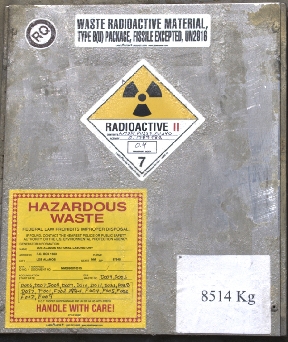
WATCHDOG GROUPS HEAD TO D.C.TO URGE CONGRESS TO CONFRONT “THE GROWING U.S. NUCLEAR THREAT”
Alliance for Nuclear Accountability
A national network of organizations working to address issues of nuclear weapons production and waste cleanup
Nuclear Watch New Mexico
May 14, 2015
WATCHDOG GROUPS HEAD TO D.C. TO URGE CONGRESS, OBAMA ADMIN.
TO CONFRONT “THE GROWING U.S. NUCLEAR THREAT;”
NEW REPORT SEEKS CUTS IN BOMB PLANTS, WARHEAD MODERNIZATION
DIVERTING SAVINGS TO CLEANUP AND WEAPONS DISMANTLEMENT
Dozens of community leaders from around the country will travel to Washington, DC next week to oppose U.S. Department of Energy (DOE) nuclear weapons projects, which they say will waste billions in taxpayer funds, damage the environment and undermine the nation’s non-proliferation goals. The group will meet with leading members of Congress, committee staffers, and top administration officials with responsibility for U. S. nuclear policies to press for new funding priorities.
Activists from nearly a dozen states are participating in the 27th annual Alliance for Nuclear Accountability (ANA) “DC Days.” They will deliver copies of ANA’s just-published report, The Growing U.S. Nuclear Threat (http://bit.ly/growing_nuclear_threat). The new 20-page analysis dissects the Obama Administration’s latest plans to spend hundreds of billions more on nuclear weapons programs without, the authors conclude, enhancing U.S. security.
Joining the Alliance will be four members of Nuclear Watch New Mexico: Dr. James Doyle, a nonproliferation expert fired by the Los Alamos Lab after writing a study arguing for nuclear weapons abolition; Chuck Montano, former LANL auditor and author of his just-released book Los Alamos: A Whistleblower’s Diary (http://losalamosdiary.com/index.html); Jay Coghlan, Executive Director; and Scott Kovac, Operations Director. “We will use this opportunity to represent New Mexicans who oppose the open checkbook policy for nuclear weapons by Congress to the National Labs,” Kovac stated.
Both Doyle and Coghlan have recently returned from the NonProliferation Treaty (NPT) Review Conference at the United Nations in New York City where they witnessed U.S. officials claiming that one trillion dollar plans for nuclear weapons modernization “contribute to and do not detract from progress on our NPT nuclear disarmament obligations.” But as Ralph Hutchison of the Oak Ridge Environmental Peace Alliance, the report’s editor, noted, “Massive spending on nuclear weapons ‘modernization’ increases the nuclear danger for the U.S. Lack of accountability at DOE wastes billions and puts the public at even greater risk. ANA members from across the country will urge policy-makers to cut programs that fund dangerous boondoggles. The money saved should be redirected to cleaning up the legacy of nuclear weapons research, testing and production.” Participants in DC Days include activists from groups that monitor such U.S. nuclear weapons facilities as Hanford, Lawrence Livermore, Rocky Flats, Los Alamos, Kansas City Plant, Pantex, Sandia, Oak Ridge, Savannah River and the Waste Isolation Pilot Plant.
The Alliance for Nuclear Accountability is a network of local, regional and national organizations representing the concerns of communities downwind and downstream from U.S. nuclear weapons production and radioactive waste disposal sites. As part of its DC Days, ANA will sponsor an Awards Reception honoring leaders of the movement for responsible nuclear policies on Monday evening, May 18. Honorees include U.S. Senator Harry Reid, U.S. Representative John Garamendi, Los Alamos whistleblower Dr. James Doyle, former FBI investigator of Rocky Flats Jon Lipsky, and nuclear campaigner Michael Keegan: The event will take place in Room B-340 of the Rayburn House Office Building from 5:30pm to 7:30pm.
After learning of his award, Dr. James Doyle replied, “It is an honor to be recognized by citizen organizations across the country who have been opposing nuclear weapons at the grassroots for decades. The Alliance for Nuclear Accountability is an important part of the fabric of our civil society and helps create an informed citizenry essential to our freedom and security. My case shows that even in America you must be careful when you question nuclear weapons. These groups have been trying to change that since before I knew what nuclear war would mean for humanity. I am proud to be working with them to eliminate nuclear weapons.”
– – 3 0 – –
Watchdog Groups Head to DC to Urge Congress and the Obama Administration to Confront “The Growing US Nuclear Threat”
New ANA report seeks cuts in bomb plants and warhead modernization; use savings for cleanup and weapons dismantlement
Four Reasons Why U.S. Claims of NPT Compliance Are False
Four Reasons Why U.S. Claims of NPT Compliance Are False
In April 2015 the U.S. State Department issued a so-called Fact Sheet entitled Myths and Facts Regarding the Nuclear Non-Proliferation Treaty and Regime. Its targeted audience was international delegations attending the 2015 NonProliferation Treaty (NPT) Review Conference. Given the increasing dissatisfaction of non-nuclear weapons states, the State Department argued that numerical stockpile reductions since the end of the Cold War is ample evidence that the U.S. is complying with the NPT’s Article VI obligation for nuclear disarmament. It also claimed:
The United States is committed not to pursue new nuclear warheads, and life extension programs will not provide for new military capabilities… infrastructure modernization, stockpile stewardship, and life extension programs for U.S. warheads will contribute to and do not detract from progress on our NPT nuclear disarmament obligations. [1]
There are four immediate reasons why these claims by the United States Government are false:
1) While it’s true that the number of weapons is being reduced (albeit more slowly now), the U.S.’ nuclear stockpile is being indefinitely preserved and qualitatively improved through new military capabilities. Clearly this is not the nuclear disarmament required by NPT Article VI.
2) The United States Government is preparing to spend more than one trillion dollars over the next thirty years for nuclear weapons modernization and new ballistic and cruise missiles, submarines and bombers.[2] [3] This too is obviously not nuclear disarmament.
3) The new Kansas City Plant has begun operations to produce or procure up to 100,000 nonnuclear components every year for nuclear weapons life extension programs.[4] Multi-billion dollar upgrades and new facilities are planned for expanded production of plutonium pit cores at the Los Alamos Lab and for thermonuclear components (“secondaries”) at the Y-12 Plant near Oak Ridge, Tennessee.[5] These upgrades and new facilities are being designed to produce up to 80 plutonium pits and secondaries per year. Once completed, these three new complexes comprehensively rebuild the production side of the U.S. nuclear weapons complex. Moreover, they are expected to be operational until ~2075. That is not nuclear disarmament.
4) The United States Government has a high-level annual plan to indefinitely preserve its nuclear weapons stockpile [6] and a new high-level plan to prevent other countries from acquiring or proliferating nuclear weapons.[7] But the United States Government has no high-level policy plan to implement its NPT Article VI nuclear disarmament obligation.
Concerning indefinite preservation of the nuclear stockpile, the U.S. National Nuclear Security Administration has scheduled programs out to 2040 and beyond that extend the service lives of nuclear weapons by at least 30 years. Moreover, the current B61-12 life extension program will be followed by another program in 2038 to produce the B61-13 nuclear bomb, indicating a perpetual cycle of life extension programs.[8] It also suggests that some form of the B61 nuclear bomb is planned to be forward deployed in Europe until around the year 2070.
Concerning new military capabilities, the B61-12 blurs the line between strategic and tactical nuclear weapons. The B61 life extension program is creating the world’s first nuclear smart bomb through the installation of a new guided tail fin kit that will dramatically increase its accuracy. It is also slated for delivery by the new super stealthy F-35. Yet the United States continues to assert that it would never give existing nuclear weapons new military capabilities.[9]
This is part of a long pattern. Then-U.S. Secretary of State Hillary Clinton told the international delegations at the 2010 NPT Review Conference that “[o]ur Nuclear Posture Review ruled out the development of new U.S. nuclear weapons and new missions and capabilities for our existing weapons.” [10] But at the same time the U.S. was ramping up a life extension program for the 100 kiloton W76 warhead that gave it the capability of assuming the hard target kill mission of the 475 kiloton W88 warhead.[11] Going further back, in the late 1990’s the 9 megaton surface-burst B53 bomb was replaced by the 400 kiloton B61-11 earth-penetrating modification to destroy hardened deeply buried targets. The point is that the general direction of post-Cold War planning for nuclear warfighting has been toward more accurate weapons with lower yields and reduced fallout, all of which make them arguably more usable.
Nevertheless, the United States maintains that these are not new military capabilities. It apparently avoids talking about the characteristics of individual nuclear weapons types and adopts the position that there are no new military capabilities because of the incalculable amount of extremely destructive military capabilities already in the stockpile as a whole. Thus, by this logic, if a lower yield, more precise nuclear weapon assumes the mission of a higher yield weapon, then that is not a new military capability. If so, then the United States Government’s assertion that it will never give existing nuclear weapons new military capabilities is essentially meaningless, giving it carte blanche to do whatever it wants with its existing stockpile.
The international community should demand that the United States Government fully explain and justify its claim that it would never give existing nuclear weapons new military capabilities, when the evidence points to the contrary. Perhaps that would be a step toward getting serious about global, verifiable nuclear disarmament.
[1] https://web.archive.org/web/20171105070826/https://www.state.gov/t/isn/rls/fs/2015/240650.htm
[2] Projected Costs of U.S. Nuclear Forces, 2015 to 2024, Congressional Budget Office, January 22, 2015,
“CBO estimates the Administration’s plans for nuclear forces would cost $348 billion over the next decade… For each leg of the triad, most of the cost to procure new systems would occur after 2023.” https://www.cbo.gov/publication/4987
[3] The Trillion Dollar Triad, James Martin Center, Jan. 7, 2014, http://cns.miis.edu/trillion_dollar_nuclear_triad/
[4] http://www.nnsa.energy.gov/aboutus/ourlocations/kansas-city-plant
[5] See the National Nuclear Security Administration’s FY 2016 Stockpile Stewardship and Management Plan, March 2015, Section 2.4.6.3 “Uranium Sustainment” and Section 4.3.3.1 “Strategy for Key Commodities,” https://web.archive.org/web/20171229181847/https://nnsa.energy.gov/sites/default/files/FY16SSMP_FINAL%203_16_2015_reducedsize.pdf
[6] FY 2016 Stockpile Stewardship and Management Plan, National Nuclear Security Administration, March 2015, https://web.archive.org/web/20171229181847/https://nnsa.energy.gov/sites/default/files/FY16SSMP_FINAL%203_16_2015_reducedsize.pdf
[7] Prevent, Counter, and Respond – A Strategic Plan to Reduce Global Nuclear Threats, National Nuclear Security Administration, March 2015, https://www.scribd.com/doc/259397464/Prevent-Counter-and-Respond-A-Strategic-Plan-to-Reduce-Global-Nuclear-Threats-FY-2016-2020
[8] FY 2016 Stockpile Stewardship and Management Plan, National Nuclear Security Administration, March 2015, chapter 2, page 19 and chapter 8, page 18, https://web.archive.org/web/20171229181847/https://nnsa.energy.gov/sites/default/files/FY16SSMP_FINAL%203_16_2015_reducedsize.pdf
[9] For more, see General Confirms Enhanced Targeting Capabilities of B61-12 Nuclear Bomb, Hans Kristensen, January 23, 2014, http://fas.org/blogs/security/2014/01/b61capability/
[10] Hillary Clinton’s Remarks before the 2010 NPT Review Conference, May 3, 2010, https://web.archive.org/web/20120930181944/http://www.cfr.org/united-states/hillary-clintons-remarks-before-2010-npt-review-conference/p22042
[11] For more, see Administration Increases Submarine Nuclear Warhead Production Plan, Hans Kristensen, August 30, 2007, http://fas.org/blogs/security/2007/08/us_tripples_submarine_warhead/
Appeals court overturns sabotage convictions of Transform Now Plowshares activists
Appeals court overturns sabotage convictions of Transform Now Plowshares activists, vacates sentences of Megan Rice, Michael Walli and Gregory Boertje-Obed on all charges and remands for resentencing.
Court suggests decision may lead to release of Rice, Boertje-Obed and Walli
8 May 2015
for immediate release
The Sixth Circuit Court of Appeals handed down a decision in favor of the Megan Rice, Michael Walli and Greg Boertje-Obed who were convicted in 2013 of sabotage for their July 28, 2012 Transform Now Plowshares protest of nuclear weapons production at the Y12 Nuclear Weapons Complex in Oak Ridge, Tennessee.
“The purpose of the action of Michael, Megan and Greg was to call attention to the ongoing production of thermonuclear weapons components at the bomb plant in Oak Ridge and, more specifically, to oppose plans to build a new, multi-billion dollar bomb plant—the Uranium Processing Facility—at Y12,” said Ralph Hutchison, coordinator of the Oak Ridge Environmental Peace Alliance. “They were nonviolent protestors in the tradition of Gandhi, not saboteurs. We are pleased the Sixth Circuit appreciated the difference.”
The court ruled 2-1 in a decision handed down on May 8, 2015, that the government failed to prove the Transform Now Plowshares activists intended to “injure the national defense,” a requirement for conviction under the sabotage act. Disposing of the government’ arguments one by one, the court finally states simply: “The defendants’ convictions under §2155(a) must be reversed.”
The circuit court had the option of merely reversing the sabotage conviction but letting the defendants’ sentences stand on the other charge for which they were convicted—depredation of government property. Noting the lesser charge would have resulted in lesser sentences—the men received 62 month sentences and Megan Rice a sentence of 35 months—under federal sentencing guidelines (“it appears that the guidelines ranges for their § 1361 convictions on remand will be substantially less than their time already served in federal custody.“), the court chose to vacate all sentences and remand the their cases for resentencing on the remaining depredation count.
Michael Walli is currently serving his sentence at McKean federal prison in Bradford, PA; Greg Boertje-Obed is in Leavenworth, KS; Megan Rice is in federal prison in Brooklyn, NY. Her release date is currently in mid-November, 2015.
At this time, it is not clear when resentencing will take place.
for more information
Ralph Hutchison 865 776 5050
Paul Magno 202 321 6650

